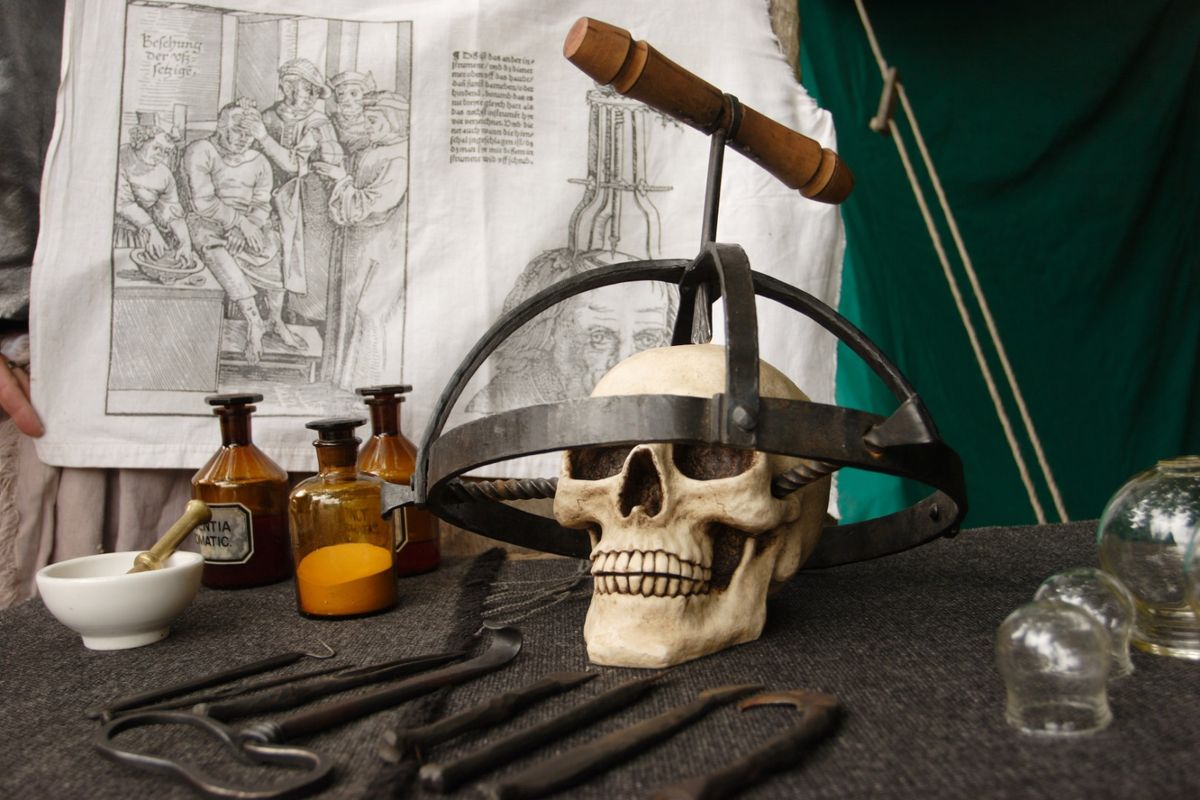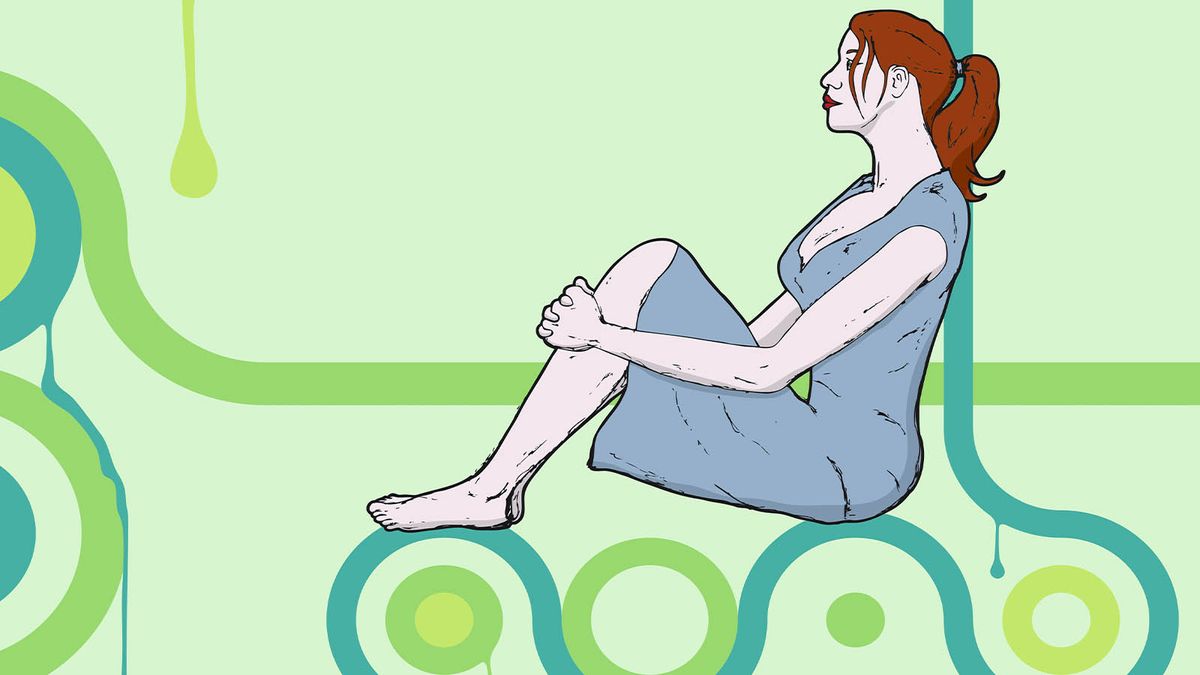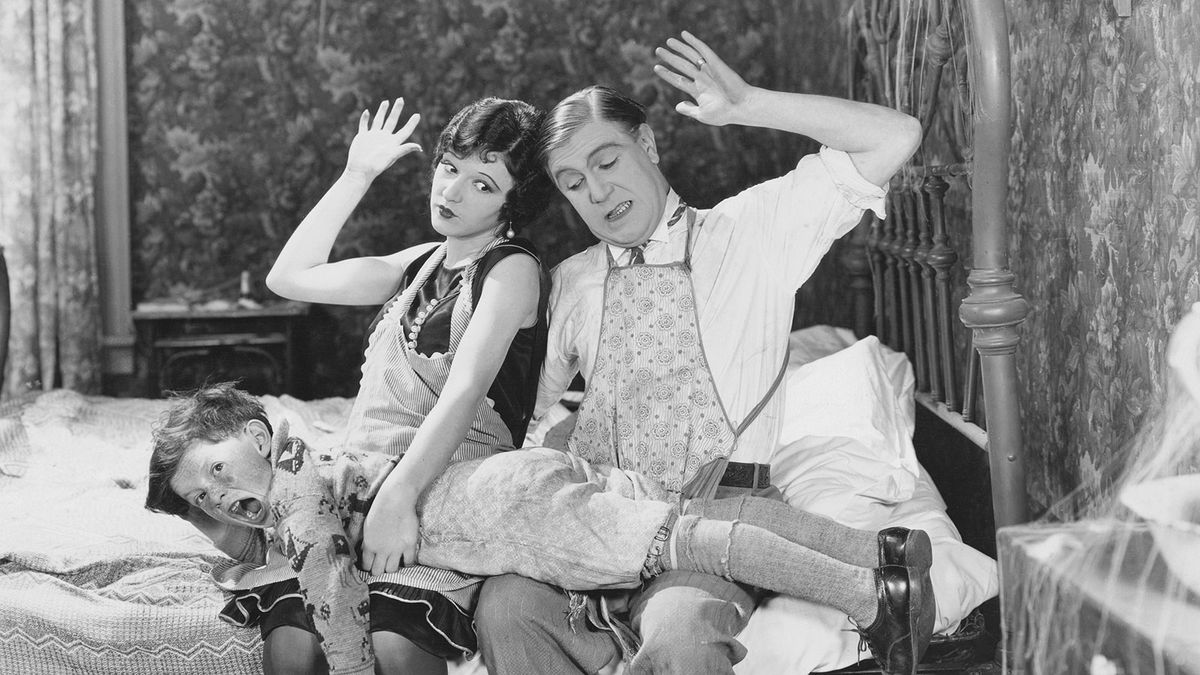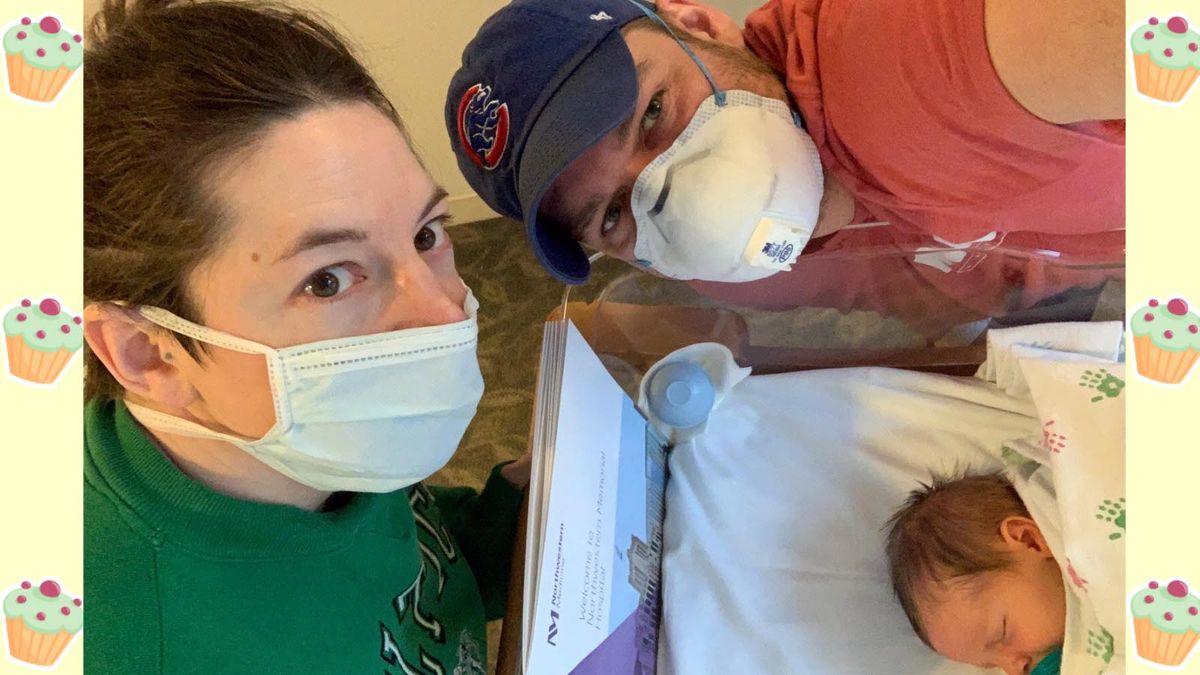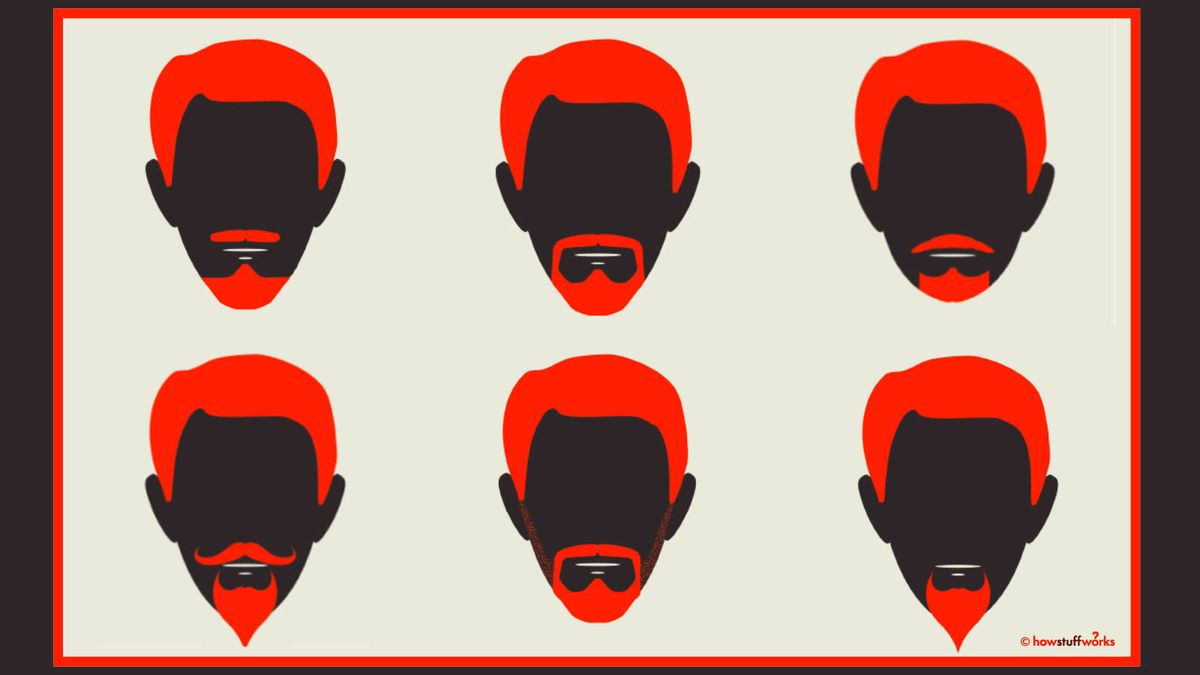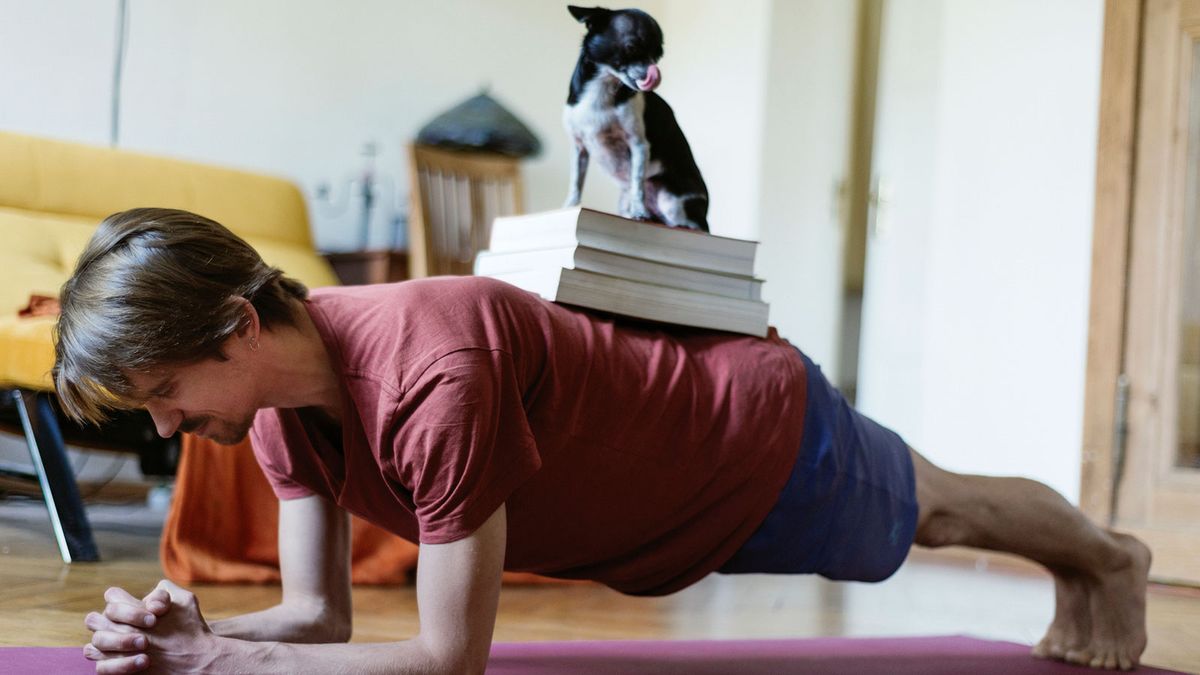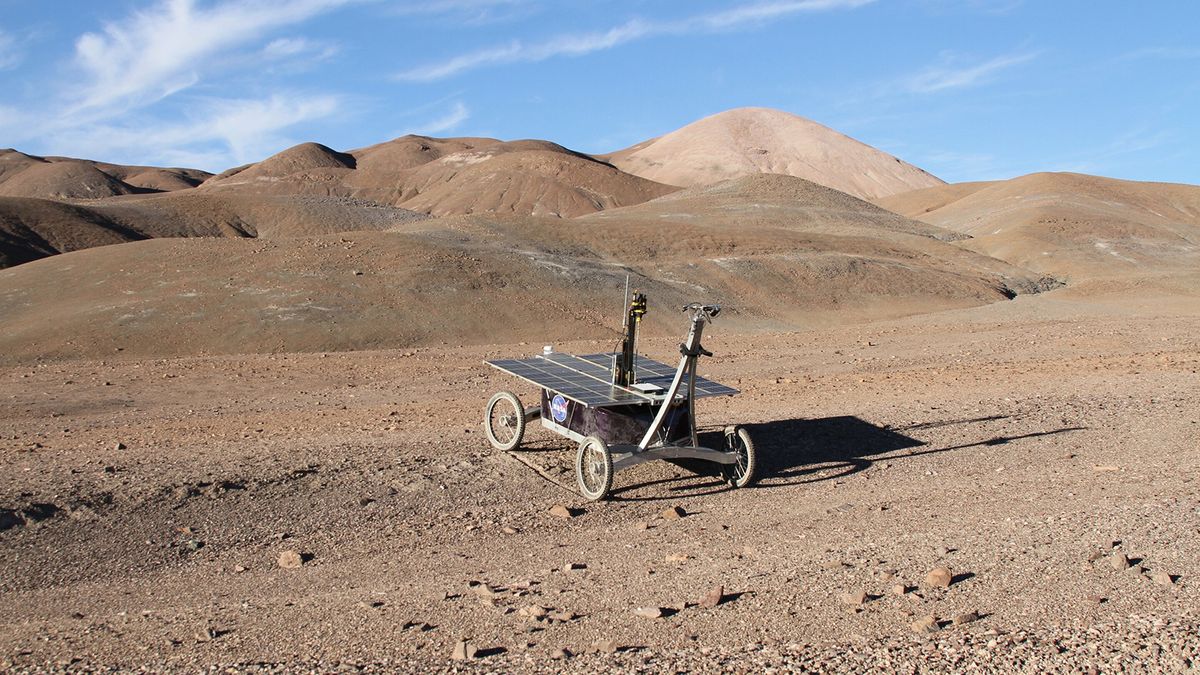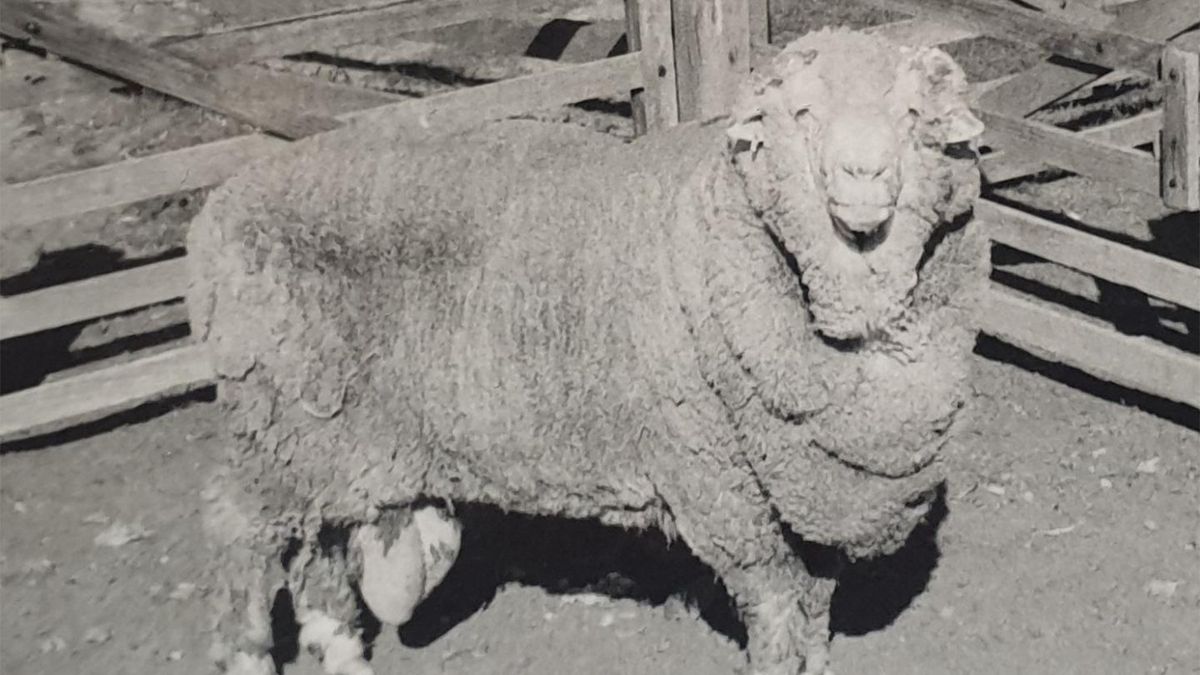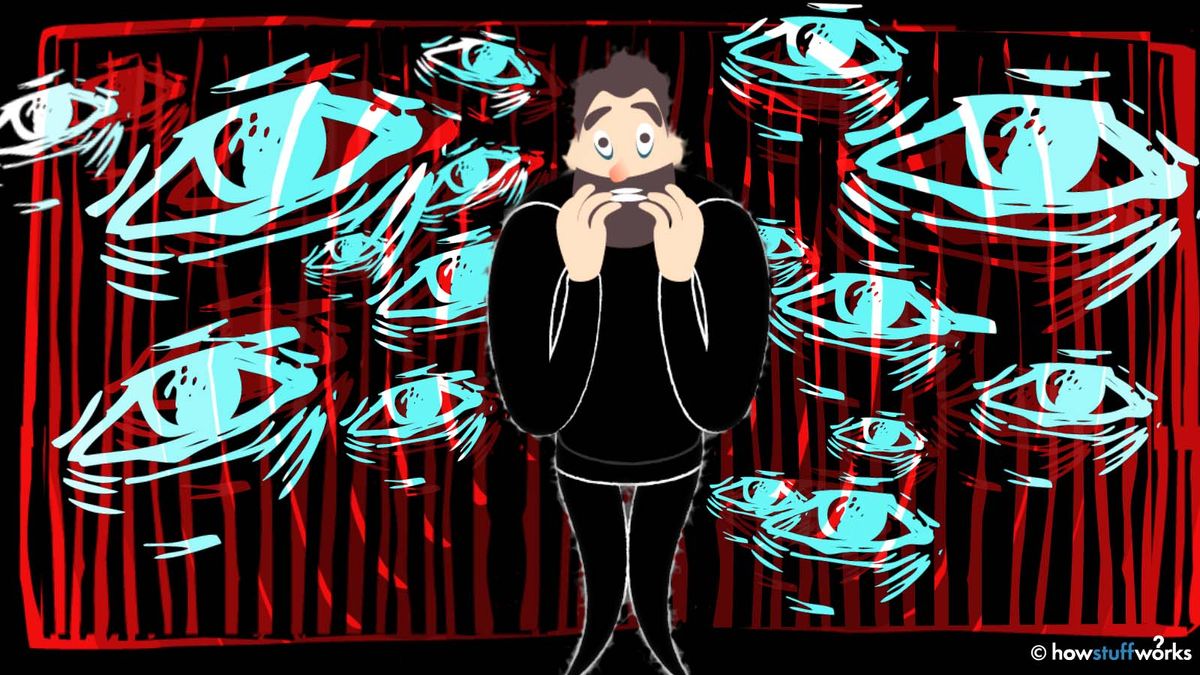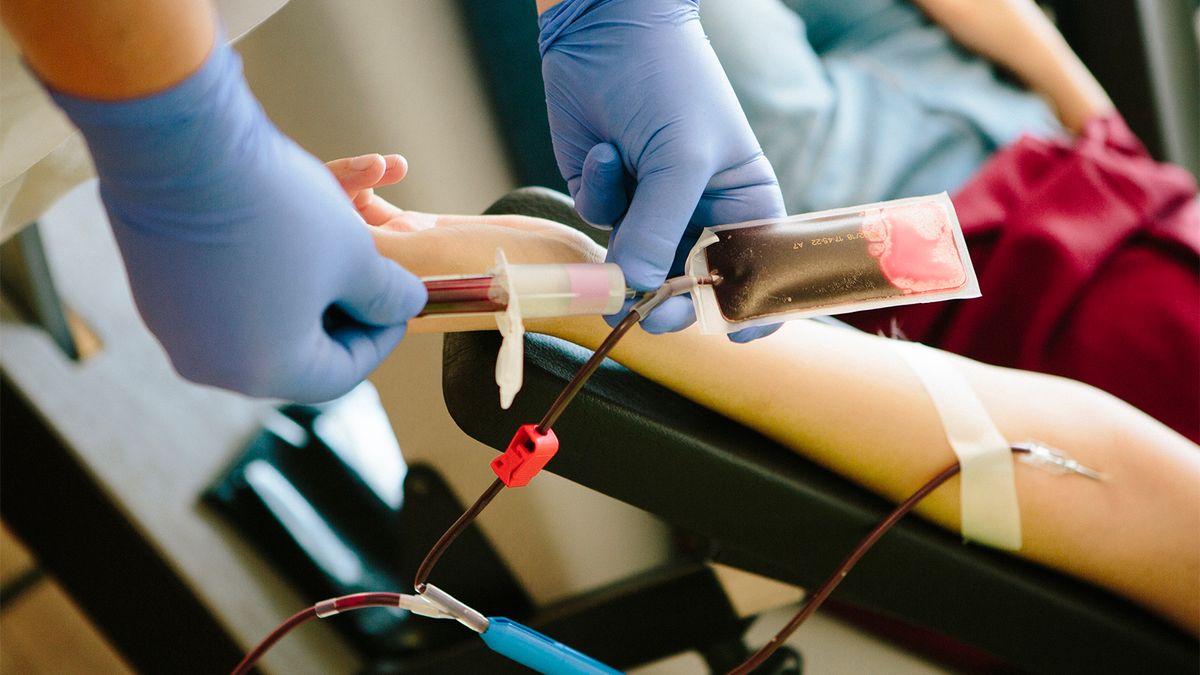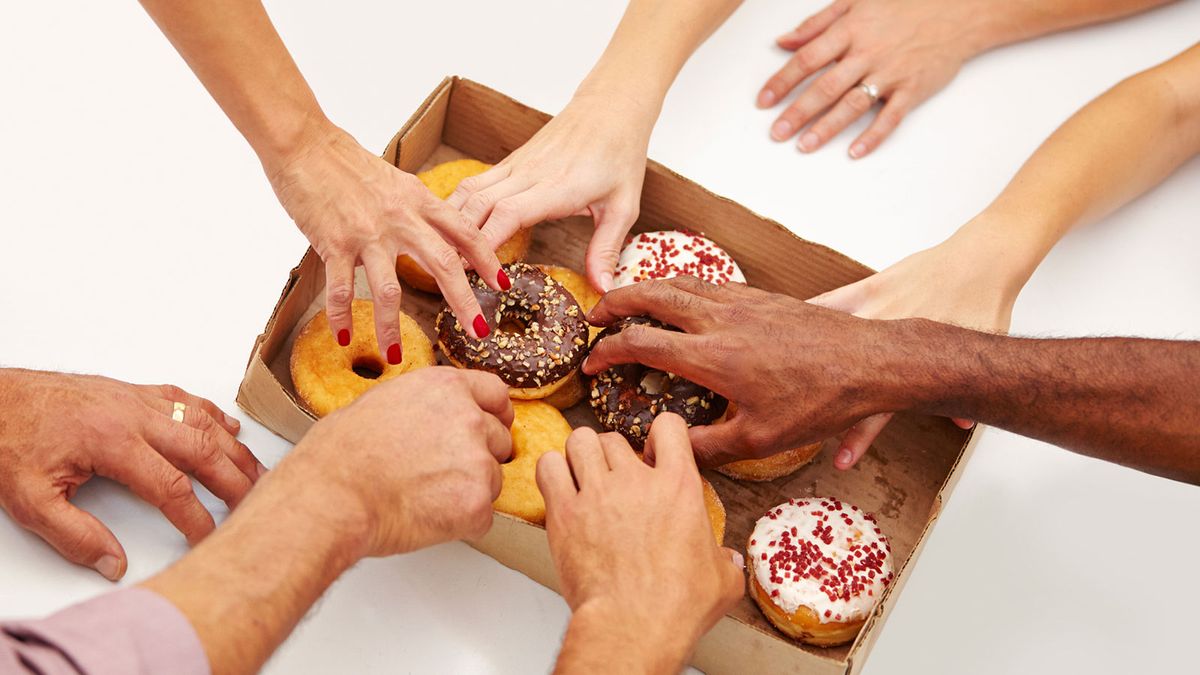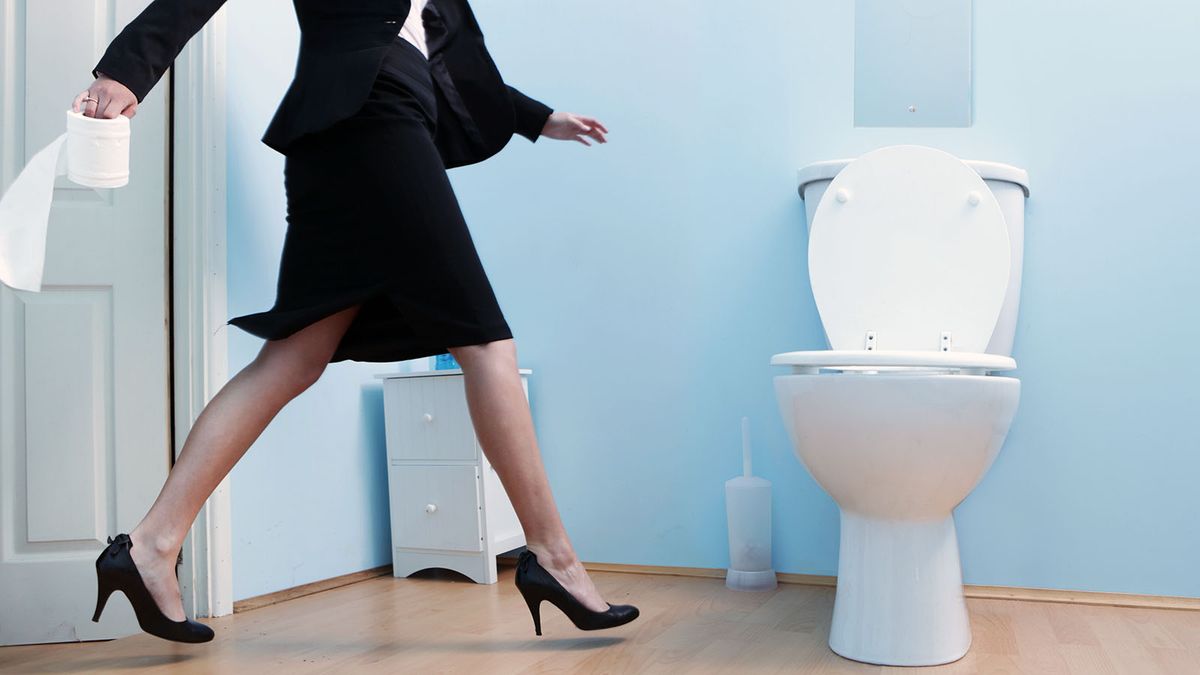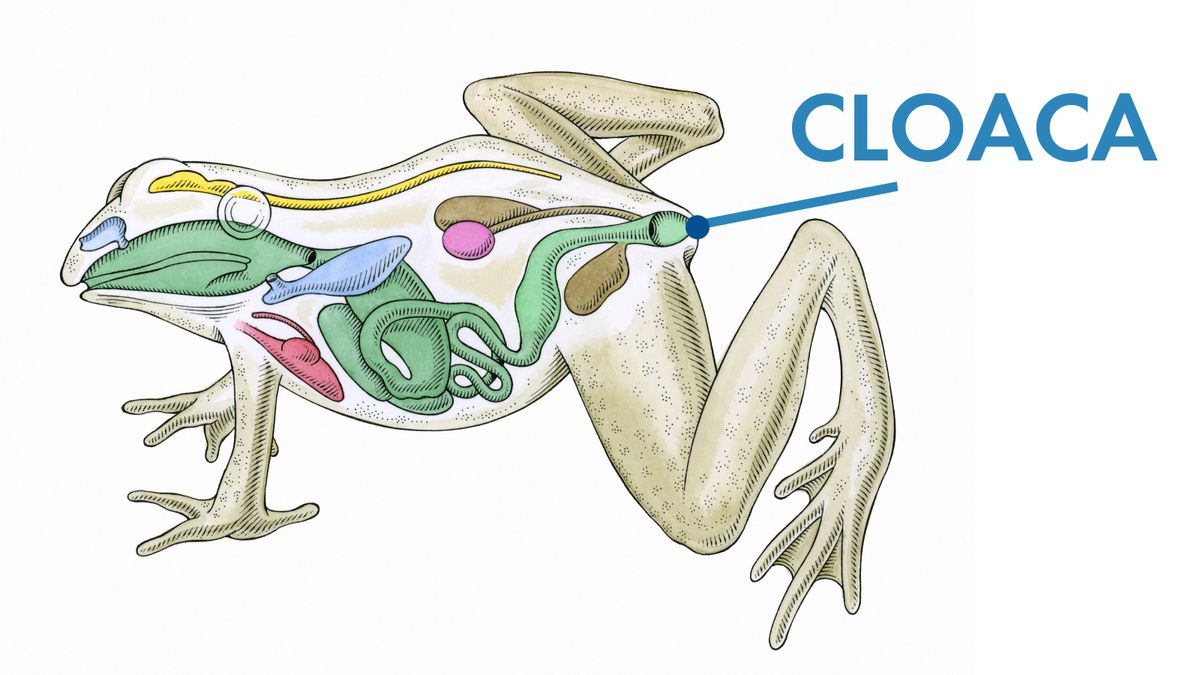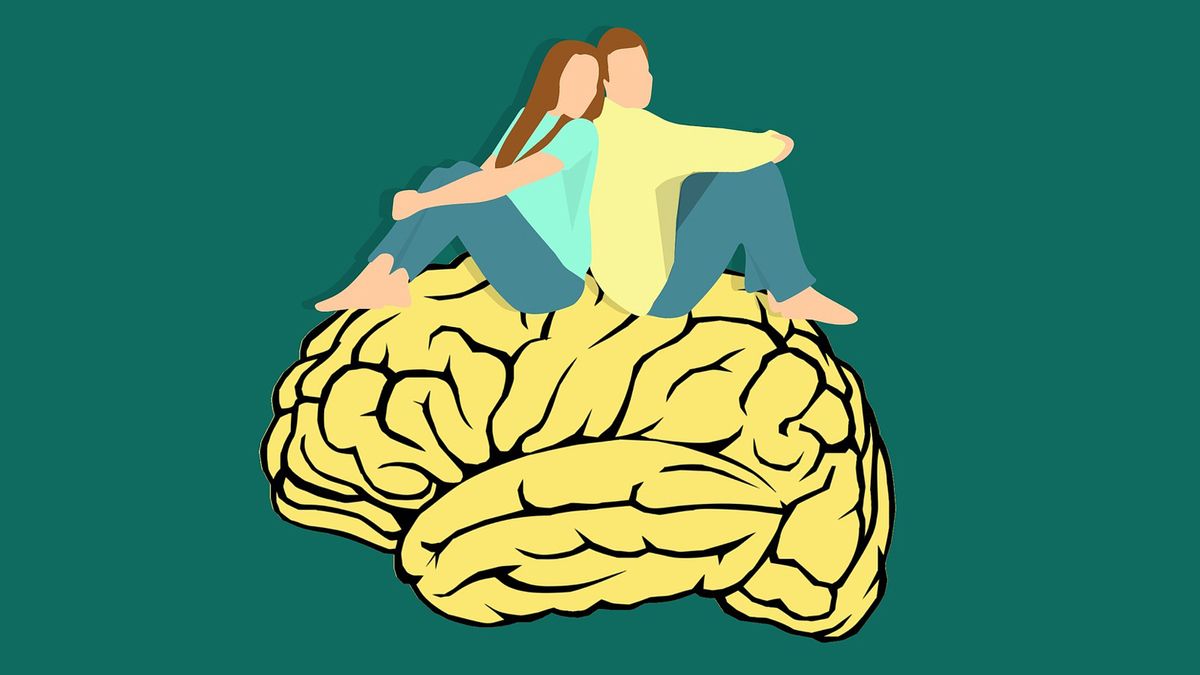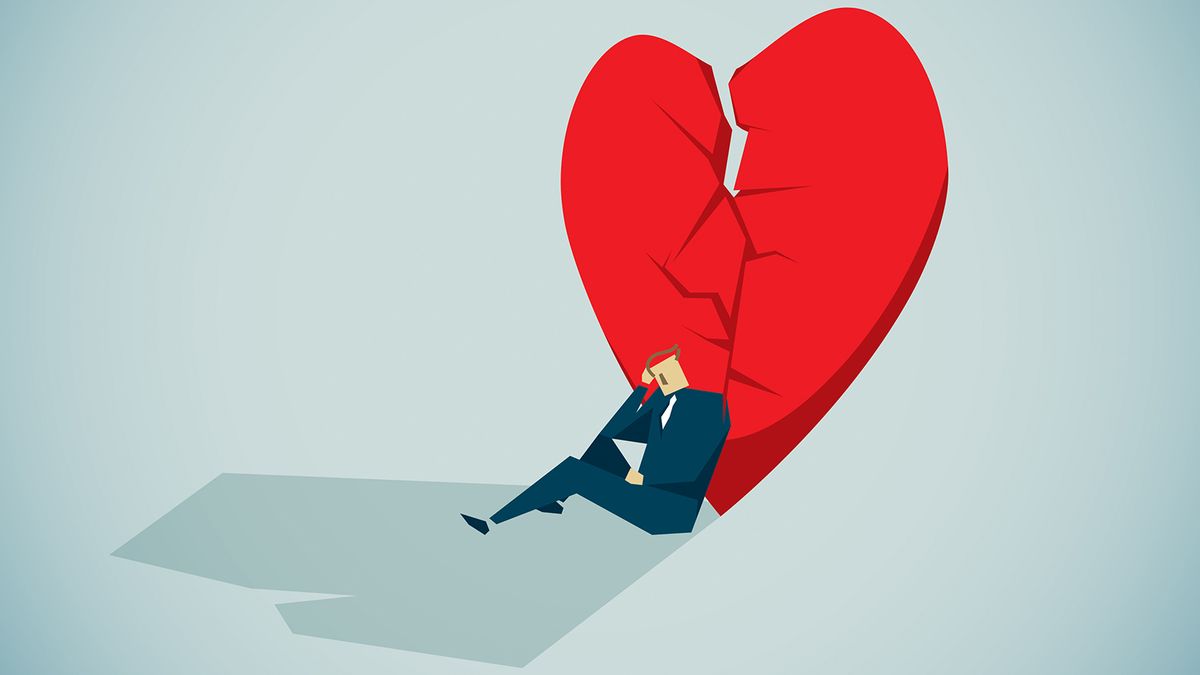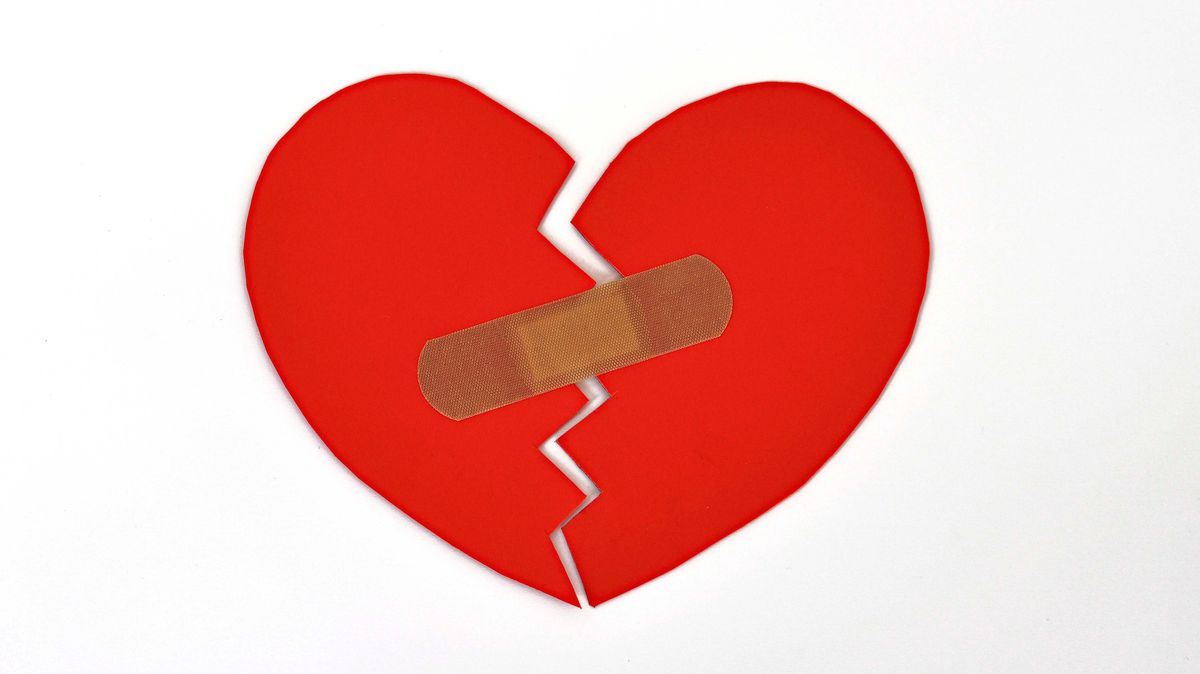Боли в спине и травмы спины очень распространены в нашем обществе. На самом деле примерно от 60 до 90 процентов всех граждан США хотя бы раз в жизни сталкивались с травмой спины. Половина из этих людей будут испытывать множественные эпизоды проблем со спиной. Многим предстоит хирургическое вмешательство, и примерно у 10 процентов их состояние станет хроническим. Конечная стоимость потери производительности и ресурсов здравоохранения для общества исчисляется миллиардами долларов. Однако еще более высокую цену платят люди, которые утратили способность участвовать в деятельности, которая им больше всего нравится. Проблемы со спиной могут сделать рыбалку, игру в гольф или даже просто игры с детьми и внуками чреватыми болью. В худшем случае проблемы со спиной могут помешать даже возможности одеться.
Несмотря на все это, люди по-прежнему принимают свою спину как должное, не осознавая, в какие опасные положения они ее ставят каждый день. Почти все, что вы делаете, требует использования вашей спины, а проблемы со спиной редко являются результатом одного действия или несчастного случая. Большинство травм происходят в течение нескольких лет или даже десятилетий в результате различных факторов — того, как вы спите или сидите, что вы едите или как вы справляетесь с эмоциональными стрессами дома и на работе. В этой статье мы расскажем вам, как выполнять эти и многие другие задачи, не травмируя спину. Просто взгляните на все полезные советы, разбросанные по этим разделам:
- Защита спины в постели Вы думаете, что во время сна очень сложно повредить спину. В бессознательном состоянии ваши мышцы расслаблены, и вы ничего не поднимаете и не несете. Но правда в том, что если у вас есть кровать, которая не обеспечивает достаточной поддержки спины, это может быть причиной того, что вы просыпаетесь с жесткостью спины. Кроме того, если вы находитесь в положении, вредном для спины, и остаетесь в нем в течение восьми часов, пока спите, вы можете повредить спину, даже не подозревая об этом. В этом разделе мы расскажем, как правильно купить кровать и в какой позе спать.
- Защита спины утром Пока вы готовитесь утром к началу дня, существует множество вредных привычек, которые могут создать нагрузку на вашу спину. Например, когда вы стоите у раковины и чистите зубы, поддерживаете ли вы спину? В этом разделе мы дадим вам много советов, как научиться читать лицом к лицу, не забывая при этом о спине. Мы покажем вам, как правильно надевать обувь, и подскажем, какую обувь выбрать, чтобы избежать травм спины. Нет ничего лучше, чем начать свой день с правильной ноги.
- Защита спины в машине Многие из нас проводят значительную часть дня в машине. Как ни странно, мало внимания уделяется тому, насколько комфортно мы чувствуем себя в наших машинах или какой вред наши автокресла могут нанести нашей спине. В этом разделе мы дадим вам советы по выживанию, которые вам понадобятся, чтобы справиться с утренними поездками на работу, не жертвуя спиной. Мы расскажем вам, как правильно садиться и выходить из автомобиля, а также как сделать ваше автокресло более удобным для спины. Мы также дадим вам советы, как сэкономить на длительной поездке на автомобиле.
- Защита спины на работе Ваш офис похож на ваш дом вдали от дома. Тем не менее, почти не учитывается, насколько удобно вам сидеть за столом. Неправильный тип стула, клавиатура или монитор, расположенные под неправильным углом, или простое сидение в одном положении слишком долго могут привести к серьезным проблемам со спиной. Мы покажем вам, как обустроить кабину таким образом, чтобы свести к минимуму нагрузку на спину.
- Защита спины во время тренировки Это замкнутый круг. Если у вас болит спина, вы, вероятно, перестанете тренироваться. Но если вы перестанете тренироваться, у вас больше шансов повредить спину. Даже если вас беспокоит спина, важно хотя бы немного потренироваться. Движение держит суставы в спине смазанными и свободными. В этом разделе мы покажем вам, как ходить в спортзал, не напрягая себя. Мы также дадим вам несколько альтернативных упражнений, которые могут быть лучше для вашей спины.
- Растяжка для спины Сохранение гибкости спины — важная часть защиты спины от травм. Когда ваша спина напрягается, вы, скорее всего, будете тянуть или напрягать мышцы. В этом разделе мы покажем несколько растяжек, чтобы расслабить спину. Сначала мы покажем, как нужно растягивать бедра. Далее мы перейдем к подколенным сухожилиям, а затем к сгибателям бедра. Наконец, мы закончим растяжкой для нижней части спины и позвоночника.
- Упражнения для спины Хотя ранее мы рассказывали вам, как тренироваться, не травмируя спину, мы не показывали вам упражнения, специально предназначенные для укрепления спины. Мышцы спины поддерживают не только позвоночник, но и всю верхнюю часть тела. Ваши мышцы спины нуждаются как в силе, так и в физической подготовке, чтобы правильно выполнять свои функции. В этом разделе вы узнаете об упражнениях, таких как сгибание рук для мышц живота, упражнения для верхней и нижней части спины, а также о том, как правильно приседать, не травмируя спину.
- Защита спины во время подъема Большинство людей, которые выгибают спину, делают это, пытаясь поднять предмет неправильно. Поднятие тяжестей создает большую нагрузку на спину, чем любая другая деятельность, за исключением, возможно, переноски. В этом разделе мы покажем различные подъемы, предназначенные для спасения вашей спины. Вы научитесь приседать с тяжелыми предметами, играть в гольф с легкими предметами и поднимать подъемным краном неудобные предметы. Если вы можете правильно освоить поднятие тяжестей, вы сделали большой шаг вперед в защите своей спины.
- Защита спины при перемещении предметов Перевозка или перенос предметов может не вызвать немедленного травматического стресса, который возникает при попытке поднять предмет, но он может нанести не меньший вред вашей спине. Есть несколько методов, которые вы можете использовать, чтобы помочь вам переместить предметы, которые не приведут к поездке в отделение неотложной помощи. В этом разделе мы дадим полезные советы по переноске или перемещению предметов. Мы также расскажем вам, как правильно пользоваться таким инструментом, как лопата или грабли, и как лучше всего хранить предметы для спины.
- Диета и боль в спине Следите за тем, что вы можете есть, это также может помочь защитить вашу спину. Совершенно очевидно, что если вы не переносите большой вес на переднюю часть тела, это снимает большую нагрузку с мышц спины. Но в дополнение к преимуществам поддержания здорового веса правильное питание также может предотвратить травмы спины. Если вы устали и устали от недостатка питания, у вас гораздо больше шансов потянуть мышцу или получить еще одну травму спины. Мы расскажем вам, какие продукты вы должны есть, чтобы спасти свою спину.
- Стресс и боль в спине Стресс и напряженные мышцы идут рука об руку. Если вы испытываете сильное напряжение в верхней части спины и плечах, вы созрели для травмы спины. В этом разделе мы поможем вам распознать, когда вы испытываете высокий уровень стресса и вам нужно быть осторожным со своей спиной. Мы также дадим несколько советов по борьбе со стрессом, таких как визуализация.
Эта информация предназначена исключительно для ознакомительных целей. ОН НЕ ПРЕДНАЗНАЧЕН ДЛЯ ПРЕДОСТАВЛЕНИЯ МЕДИЦИНСКИХ КОНСУЛЬТАЦИЙ. Ни редакторы Consumer Guide (R), Publications International, Ltd., ни автор, ни издатель не несут ответственности за любые возможные последствия любого лечения, процедуры, упражнений, изменения диеты, действия или применения лекарств, которые являются результатом чтения или следования информации. содержащиеся в этой информации. Публикация этой информации не является медицинской практикой, и эта информация не заменяет рекомендации вашего врача или другого поставщика медицинских услуг. Перед проведением любого курса лечения читатель должен проконсультироваться со своим врачом или другим поставщиком медицинских услуг.
- Защита спины в постели
- Защита спины по утрам
- Защита спины в машине
- Защита спины на работе
- Защита спины во время тренировки
- Растяжки для спины
- Упражнения для спины
- Защита спины во время подъема
- Защита спины при перемещении предметов
- Диета и боль в спине
- Стресс и боль в спине
Защита спины в постели

Многие виды деятельности в течение обычного дня создают нагрузку на спину, даже некоторые виды деятельности, которые вы, возможно, совсем не считаете утомительными. В краткосрочной перспективе эти действия могут вызвать незначительные боли; в долгосрочной перспективе они могут вызвать хронические проблемы со спиной. Например, около трети своей жизни вы проводите в постели. Тем не менее, некоторые люди никогда не связывают утреннюю боль в спине с состоянием своего постельного белья или с тем, как они ложатся в постели ночью. Вот несколько советов, которым вы можете следовать, чтобы позаботиться о своей спине, пока вы хорошо высыпаетесь.
Получите удобную для спины кровать
Когда вы в последний раз покупали новую кровать? Возможно, вы подумали о том, чтобы положить под матрас лист фанеры, чтобы поддержать спину. Многие боли в спине, связанные со сном, действительно вызваны слишком мягким матрасом. Однако в большинстве случаев добавление фанеры к мягкому матрасу не поможет, потому что между деревом и вашим телом слишком много мягкого материала, и ваш позвоночник получает слишком мало поддержки.
Что вам нужно, так это что-то твердое. Многим нравится лежать на покрытом ковром полу, потому что он твердый, но поверх него есть набивка для ваших костей. Иногда это может сработать, но что вам действительно нужно, так это хороший ортопедический пружинный блок и матрас. Стоимость может сначала напугать вас, но подумайте, сколько денег многие люди тратят на оплату автомобиля каждый месяц; подумайте, сколько времени средний человек проводит в день в этом дорогом автомобиле или грузовике; Теперь посчитайте, сколько времени вы проводите в постели. Получить картину?
Какой матрас лучше? Это может зависеть от личных предпочтений. Различные типы постельных принадлежностей, такие как водяные кровати и надувные матрасы, имеют разные преимущества и недостатки по сравнению с более традиционными кроватями. Например, водяная кровать, наполненная достаточным количеством воды, может иметь терапевтический эффект. Тепло воды может сделать вашу спину более гибкой во время сна. С другой стороны, если в нем слишком много или слишком мало воды, ваша спина может быть жесткой по утрам — если вам удастся так долго спать.
Что бы вы ни выбрали, оцените поддержку вашей кровати, лягте на нее в обычном для сна положении (на спине или боку, а не на животе) и попросите друга проверить, правильно ли выровнен ваш позвоночник. Представьте себе линию, проведенную через ухо, плечо и тазобедренные суставы на одной стороне вашего тела; если линия прямая, то кровать вам подходит. Если вы делите с кем-то постель, убедитесь, что он или она тоже лежит в постели, прежде чем пытаться это сделать, потому что изменение веса определенно будет иметь значение.
Потянитесь перед тем, как встать
Ваше тело — чудесная машина. Когда вы спите, он перемещает кровь и тепло от мышц спины к другим областям, таким как почки, печень, желудок и другие органы, которые нуждаются в них всю ночь. Когда вы просыпаетесь утром, отсутствие кровотока и движения в позвоночнике делает его уязвимым для растяжений и растяжений. Мышцы напряжены, а суставы сухие; смирись с этим, твоя спина просто не готова к этому дню.
Одна из лучших вещей, которую вы можете сделать, чтобы снизить риск растяжения или травмы спины, — это размяться перед тем, как встать с постели. Растяжка начнет согревать, разгибать и смазывать вашу спину. Попробуйте что-нибудь простое, например, лягте на спину в расслабленной, удобной позе с вытянутыми ногами. Медленно поднимите руки над головой и положите их на кровать. Аккуратно вытяните обе руки над головой так далеко, как вам удобно. Затем добавьте к упражнению ноги и пальцы ног, направляя пальцы ног к изножью кровати. Не забывайте растягиваться только до точки легкого напряжения, удерживайте растяжку в течение десяти секунд, а затем позвольте всему телу расслабиться. Для максимальной пользы повторите эту растяжку несколько раз. Вы также можете попробовать это с одной рукой за раз. Для позвоночника это как завтрак в постель.
Используйте технику логролла
Getting out of bed may not seem like much of a problem for your back. If you have ever had a back injury, though, you probably found out that this seemingly easy task can be one of the most challenging feats you attempt all day. The first thing you can do is make the task easier by raising your bed off of the ground if it sits flat on the floor (the way many water beds do). If your bed is on the floor, put it on a pedestal or bed frame. It makes the task of getting out of bed much easier on your back and the rest of your body.
Next, use what is called a logroll to get your body in a position to get out of the bed. The technique goes like this: As you are lying on your back, roll over onto your side so you are facing the side of the bed you plan to get out of. Gently bring your knees toward your chest, keeping your legs in contact with the bed at all times. As you do this, simultaneously use your hands and arms to push your upper body up off of the bed; let your legs fall slowly off of the edge. As your upper body raises up, most of your weight will be on the hip, buttocks, and thighs rather than on the spine. Complete the maneuver by putting your hands on your thighs and extending your back up as you push yourself up and out of the bed. Keep your back straight and your head up as you rise.
Take your time completing this maneuver. Remember that your back is still waking up, and even after an in-bed stretch, it is not entirely up to speed. A little extra time and a little extra care spent here could save you the agony and frustration of a bad back day.
Remember, getting back into bed can also be stressful to even a healthy back. It can be tempting to flop into bed at the end of the day, but the forced twisting that such a fall can cause is dangerous. So to insure a safe and restful evening, use this technique in reverse to get back into bed.
Just because you've managed to get out of bed without injuring your back doesn't mean there aren't a thousand other ways to strain or pull a back muscle. In the next section, we will show how to go about your morning routine while putting minimal strain on your back.
This information is solely for informational purposes. IT IS NOT INTENDED TO PROVIDE MEDICAL ADVICE. Neither the Editors of Consumer Guide (R), Publications International, Ltd., the author nor publisher take responsibility for any possible consequences from any treatment, procedure, exercise, dietary modification, action or application of medication which results from reading or following the information contained in this information. The publication of this information does not constitute the practice of medicine, and this information does not replace the advice of your physician or other health care provider. Before undertaking any course of treatment, the reader must seek the advice of their physician or other health care provider.
Protecting Your Back in the Morning

While you're rushing around trying to get ready in the morning you might be cutting corners and opening yourself up for back injuries. Here are some simple ways to protect and support your back during your morning routine.
The Sink
The bathroom can be very stressful to a back that is cold, stiff, and not yet ready to bend. Once out of bed, many people start the day with a trip to the toilet. You probably have not spent much time thinking about how this can be stressful to your back, but hazards abound.
Sinks can be the next challenge for your back. Sinks are built too low for many people. Brushing your teeth or washing your hands can place a lot of stress on your back. Next time you brush your teeth, stop and check what position your low back is in. Odds are that you will catch yourself standing bent over the sink with all of your upper body weight hanging on your low back. Improve this position to reduce the stress on your back. Consider raising the countertop and sink or, more realistically, try placing a hand on the countertop to support yourself while you brush.
The Toilet
Here are a couple of ways to help your back when you use the toilet.
First, as you sit down and stand up, place at least one hand on your thigh or on a countertop to support your back and body weight. The best option would be one hand on your thigh and the other on the counter if that doesn't involve any twisting or reaching. The more you can get your arms to do, the less your back will have to strain. Keep your back straight to avoid hanging all of your weight on your low back.
If it seems like a long way down to or up from your toilet, maybe your toilet is too low. The lower you have to bend to sit down, the greater the stress that is placed on the low back. Consider an elevated seat cushion, which can be purchased from a medical supply store, or consider having your toilet raised. Also, pay attention to where your toilet-paper holder is situated. Some toilet-paper holders are placed behind the toilet, forcing you to twist your back around to reach the paper. This movement is not good for a healthy back that is warmed up and stretched out, let alone for a cold, stiff back that just woke up. If the toilet paper is behind you, move it. Finally, some people choose the toilet as a place to read the newspaper or their favorite magazine. Although this is good for the brain, choose a friendlier location for your back.
Lift Your Feet
Forced bending and twisting of the spine is one of the worst activities for your back. Does sitting on the edge of the bed, with your feet on the floor and then bending over and twisting to put your socks on sound familiar? A way of making this task easier on your back is to bring your feet up toward your back. Try placing your heels on the edge of the bed or a chair and then putting on your socks or shoes. Also, the type of socks you wear does make a difference. Tight or very tall socks require more time and effort than do short or looser-fitting ones. If you have trouble getting your shoes on, try using a shoehorn.

Wear the Right Shoes
Shoes play an important role in the comfort of your feet and your back. Flat, thin-soled shoes often increase your back discomfort. When buying shoes, look for shoes with good arch supports and a fair amount of rubber or other soft material under the heel and sole to absorb the shock created when you walk. If you cannot find a shoe that meets these requirements, look into silicone or rubber shoe inserts. Your back will feel the difference.
Women may experience low-back pain when wearing high-heeled shoes -- and not without reason. As you remember, the low back should have a slight inward curve to it. High-heeled shoes greatly exaggerate this curve and can compress the facet joints of the spine. Wearing a lower heel is usually a better choice for your back. If you work in an environment that requires you to wear high-heeled shoes, you can help your back by wearing a pair of athletic shoes to work and then changing into your dress shoes at work. This certainly makes a long walk or a long wait at the bus stop much easier on your back. Men need to watch out for a similar problem if they wear boots with tall heels.
Итак, мы наконец-то вытащили вас из дома, не надев бандаж для спины. Ты в чистоте, да? Даже не близко. Фактически, ваш автомобиль может быть основным источником дискомфорта в спине. В следующем разделе мы поможем вашей спине пережить эту ежедневную поездку на работу.
Эта информация предназначена исключительно для ознакомительных целей. ОН НЕ ПРЕДНАЗНАЧЕН ДЛЯ ПРЕДОСТАВЛЕНИЯ МЕДИЦИНСКИХ КОНСУЛЬТАЦИЙ. Ни редакторы Consumer Guide (R), Publications International, Ltd., ни автор, ни издатель не несут ответственности за любые возможные последствия любого лечения, процедуры, упражнений, изменения диеты, действия или применения лекарств, которые являются результатом чтения или следования информации. содержащиеся в этой информации. Публикация этой информации не является медицинской практикой, и эта информация не заменяет рекомендации вашего врача или другого поставщика медицинских услуг. Перед проведением любого курса лечения читатель должен проконсультироваться со своим врачом или другим поставщиком медицинских услуг.
Защита спины в машине

Если вы похожи на большинство людей, вы, вероятно, используете свой автомобиль или грузовик, чтобы ездить почти везде. Многим людям ежедневно приходится преодолевать большие расстояния на работу и с работы. Большинство людей не тратят время на регулировку сидений в своих автомобилях, но правильно отрегулированное сиденье может снизить нагрузку на спину. Попробуйте выполнить следующие регулировки при следующем использовании автомобиля.
Ездить правильно
Придвиньте свое сиденье достаточно близко к рулевому колесу, чтобы свести к минимуму досягаемость рук, чтобы схватиться за руль. Ваши ноги должны быть согнуты в коленях и бедрах, а не оставаться прямыми. Если у вас есть регулируемая поясничная опора, отрегулируйте ее так, чтобы поясница слегка изгибалась внутрь. Если в вашем автомобиле нет этой функции, сверните полотенце размером с предплечье и положите его на поясницу. Если ваше сиденье имеет регулировку наклона, начните с того, что ваше тело будет сидеть совершенно прямо, и слегка наклоните его назад, но не слишком сильно. Упирайтесь ягодицами в спинку сиденья, чтобы они не ползли вперед, заставляя вас сутулиться.
If you travel long distances, or sit in the car for long periods, make slight but frequent adjustments in your seat's position. Even if your seat is adjusted perfectly and your back is aligned just right, locking your spine in one position for the length of the ride can cause you a lot of problems. Remember, your back likes movement. Those slight shifts keep it happy and healthy.
If your job requires you to be on the road constantly, you might want to make seat adjustability a priority in your next car purchase. In your present vehicle, though, there are various seat cushions and inserts that you can buy to improve your back position and to make your driving more comfortable. Let your back guide you in your purchase -- one size does not fit all.
Ease In and Out
Помимо самой поездки, ваш автомобиль представляет и другие опасные ситуации для вашей спины. Вы можете не обращать слишком много внимания на то, как вы садитесь и выходите из машины. Некоторые люди чуть ли не падают в свои машины, выворачивая спину потенциально опасным образом. Выход может быть столь же напряженным и опасным, если вы не обращаете внимания. Вот несколько полезных советов, которые помогут уменьшить нагрузку на спину, когда вы садитесь в машину и выходите из нее.
Before you get out of your car next time, move your seat back away from the steering wheel as far as it will go. Open the door all the way, and place your right hand on the steering wheel and your left hand on the edge of your seat, next to your left thigh, or on the edge of the roof. Lift both legs off of the floor boards, keeping them together, and move your legs and upper body as a single unit toward the open door. You should feel like you are spinning on your bottom, without twisting your spine. Next, put your feet on the ground and use your legs, hands, and arms to help raise yourself up and out of the car. Push off with your hands from the seat or the door frame, whichever affords you better leverage. Remember to keep your back straight and your head up.
To get back into the car, turn your back to the open door and sit down in the seat, using the strength of your arms and legs again to lower your body into the seat slowly. You should still be facing off to the side of the car, not toward the front. Next, put your right hand back on the steering wheel or other stable part of the car, and move your body as a single unit back toward the steering wheel. Just like getting out, your whole body pivots on your bottom and your legs swing into position without twisting your back. Readjust your seat and you are ready to roll. It may take a few extra seconds to get in and out of the car this way, but in the long run, it will help keep your back free from aches and pains.
Feed Your Spine
Даже с идеально отрегулированным сиденьем недостаток движения, связанный с поездкой на автомобиле, истощает ваш позвоночник. В длительных поездках как можно чаще выходите из машины. Когда вы остановитесь, встаньте, положите руки на бедра и слегка прогните спину. Это расслабит и растянет напряженные, уставшие мышцы и поможет сохранить смазку суставов. Как и при любой растяжке, не забывайте удерживать положение не менее десяти секунд.
Помимо растяжки спины, следует размять и ноги. Растяжка ног напрямую воздействует на спину, и ее легко можно выполнить, совершив короткую прогулку или положив одну ногу на бампер автомобиля и медленно выпрямляя колено, пока не почувствуете легкое растяжение мышц задней поверхности бедер.
Когда вы на работе, существует множество других потенциальных опасностей, которые могут вывести вас из равновесия. В следующем разделе мы покажем, как настроить вашу кабину так, чтобы она была удобной для спины.
Эта информация предназначена исключительно для ознакомительных целей. ОН НЕ ПРЕДНАЗНАЧЕН ДЛЯ ПРЕДОСТАВЛЕНИЯ МЕДИЦИНСКИХ КОНСУЛЬТАЦИЙ. Ни редакторы Consumer Guide (R), Publications International, Ltd., ни автор, ни издатель не несут ответственности за любые возможные последствия любого лечения, процедуры, упражнений, изменения диеты, действия или применения лекарств, которые являются результатом чтения или следования информации. содержащиеся в этой информации. Публикация этой информации не является медицинской практикой, и эта информация не заменяет рекомендации вашего врача или другого поставщика медицинских услуг. Перед проведением любого курса лечения читатель должен проконсультироваться со своим врачом или другим поставщиком медицинских услуг.
Защита спины на работе

Office work usually requires a great deal of sitting, which can increase the stress placed on the back. However, you can improve your back's tolerance to sitting in the office. Here's how:
Find the Perfect Chair
Start with a good ergonomically designed chair -- a chair designed to fit and support the body and spine. Ergonomically designed chairs can be expensive, but in the long run, not as expensive as a damaged back. Whether you have the most advanced ergonomically designed office chair or if you have to live with what you have, try the following suggestions to fit your chair to your spine.
Start by sitting all the way back in your chair so that your buttocks are up against the bottom of the back rest. Let your back lean against it so that the muscles can turn off. You may have been trained to type sitting up in a chair without leaning back against a support. This might be good posture, but it's very tiring for your back muscles. A footrest that lifts your knees to about the height of your hip joints will help you maintain the proper position. If your thighs are too short for the seat pan (the part you sit on), buy a cushion that will act like a spacer between you and the back of the chair. You should be able to sit all the way back yet still have some space between the backs of your knees and the seat pan.
Adjust the lumbar support to fit your low back's natural inward curve. Also, make sure that the lumbar support is set in the right place -- about the height of your belly button, not down behind your buttocks. If you do not have a lumbar support, add one by using a rolled up towel. The lumbar support is probably the most important feature of any chair, and various types can be purchased.
Support Your Arms
Many aches and pains in the upper back, and possibly even headaches, may result from the muscles of the upper back growing tired of supporting the weight of the arms. Armrests support the weight of your arms and allow your neck and shoulder muscles to relax. Some people use a wrist rest to support the weight of their arms when they do not have arm rests on their chairs. These can certainly help, but be careful to use them correctly. They are designed to support your wrists and arms when you stop typing, not while you type.
Set Up Your Workstation Correctly
How you treat your back at work is very important, but how you organize your office equipment is also important. These days, very few jobs do not involve a computer, and many computers are set up very poorly. Incorrect placement of your computer can cause neck, shoulder, and back pain and even headaches. Check the following to ensure that your computer is placed correctly. First, as you face your desk or workstation, make sure that your monitor and keyboard are set directly in front of your chest so that you do not have to turn your head to the side or twist your back. Second, ensure that the monitor is set at the correct height. For most people, this means that you should set the top of the screen at eye level. (Be sure that you have adjusted your chair and are using good posture before you make this determination.) Third, if you type a lot from paper documents, get a document holder that attaches to the side of your monitor. If the majority of your computer usage involves text entry from a document, you might consider placing the document holder directly in front of your eyes and the monitor slightly to the side.
If you must perform other tasks in addition to using a computer, such as reading or handwriting reports, it may be difficult to keep your monitor and keyboard in front of your chest; they take up too much valuable desk space. Because it is not practical to move equipment around every time you change from one task to another, you might want to consider what is called an articulating arm. This piece of equipment holds your computer monitor in front of your eyes but allows you to swing it out of your way so that you can use the desk space directly in front of you. When you need the computer again, it's as simple as swinging the monitor back.
If you use a telephone frequently, especially if you use it while you continue to work with your computer, you may need to consider the use of a headset. This lightweight piece of equipment resembles a pair of headphones, with a small speaker for one ear and a microphone attachment. A headset is a much better option than holding the receiver between your head and shoulders -- a position almost certain to cause neck stiffness and headaches. If you're on a tight budget, a less expensive option may be the use of a speaker phone if your office configuration and discussions allow it.
Now that you have positioned your computer and telephone close in your field of vision and reach, do not get too comfortable. You may still need to use other equipment in your office that requires you to move away from your desk. If you need to get a file out of a drawer, for example, use the wheels and swivel function on your chair to face the drawer, rather than twisting or reaching to get it. Better yet, stand up and walk over to it, because your back needs movement occasionally.
Stay Active
Have you ever caught yourself putting off certain tasks at work such as photocopying, sending a fax, or even going to get coffee until you can do them all at once? Without movement, even the best chair cannot keep your back happy; your back hates to sit and not move. If you must stay seated, change positions as frequently as possible by making subtle adjustments in how your body is positioned in the seat.
An even better option is to stand up as frequently as you can to talk on the telephone, confer with an associate, or send that fax. Force yourself to perform activities that require walking around more often. Don't be too concerned with your loss of productive time. When your day is done, you will probably find that it was actually more productive than a day spent putting up with the aches and pains that sitting creates.
Put Your Foot Up
If your job requires you to standing for extended periods of time, it can be very stressful to your back, even if you do not have to lift, push, pull, or carry anything. In fact, it is the lack of movement in standing that usually causes low-back pain for many people. In addition to the inactivity taking its toll, gravity relentlessly pulls downward, stressing the structures of the spine. The upper body's own weight compresses the disks, pushing their fluid out over time. When the disks compress, they lose their height, the vertebrae push closer together, and the facet joints end up bearing much of the weight of the upper body. In the short term, this can cause pain, but in the long term, it can wear the facets out prematurely.
So much for the bad news. If you have to stand for long periods, there are steps you can take to help your back. The best thing to do is alternate sitting and standing if you can, but if you can't, the next best choice is resting your foot on a prop. Try placing one foot at a time up on a footstool or any four- to six-inch block or box. When your foot is elevated, the muscles of the front of your thigh and pelvis relax. Because these muscles affect the bones and disks of your low back, when they are allowed to relax, they stop pulling down and compressing your spine. Alternate feet every few minutes so that both sides of your back can rest. Your back will be better able to tolerate the effects of prolonged standing if you put a foot up. Now you know why saloons have a rail attached to the bottom of the bar -- to act as a footrest for standing patrons.
Relax Your Back
After a long hard day at work, it is nice to come home and read the newspaper or watch some television. You already know that relaxation is good for your back, but you need to be careful that in an effort to relax, you do not put your body, specifically your spine, right back into the same posture and position it was in all day. If you work in the typical office environment, coming home and sitting on the couch or in the easy chair can have the same effect as a cast -- holding your back in a fixed position and robbing your spine of its flexibility. This kind of relaxation can make your back even more stiff and sore; what it needs is a change in position. See if you can find a way to read the newspaper or watch television without sitting in your easy chair. Try lying down on your stomach, resting either on your elbows or on a small pillow to raise your upper body off of the floor. This position introduces the normal inward curve back into your low back, and you may be surprised how good it feels. If your job has you standing on your feet much of the day, then sitting is probably a good activity for your back, but be sure that you are sitting in the proper position.
Though exercise can help your back and strengthen the muscles that support it, it is possible to go too far. In the next section, we will show you how to exercise to avoid injuring your back.
This information is solely for informational purposes. IT IS NOT INTENDED TO PROVIDE MEDICAL ADVICE. Neither the Editors of Consumer Guide (R), Publications International, Ltd., the author nor publisher take responsibility for any possible consequences from any treatment, procedure, exercise, dietary modification, action or application of medication which results from reading or following the information contained in this information. The publication of this information does not constitute the practice of medicine, and this information does not replace the advice of your physician or other health care provider. Before undertaking any course of treatment, the reader must seek the advice of their physician or other health care provider.
Protecting Your Back While Exercising

There is nothing more important to the health of your back than exercise. Exercise strengthens and stretches back muscles, lubricates facet joints, and feeds the disks. The appropriate back exercise routine performed regularly and correctly is the best gift you can give your back. Here are some tips:
Start Regularly and Sensibly
Try to choose a variety of exercises that will condition different areas of your back and total body. If you have not exercised for a while, see your physician for a general checkup before starting your program. Also, if you are under the care of a physician or therapist for a concern related to your back or other joints, make sure they approve of your exercise regimen. Some exercises can increase your pain or make your situation worse, so let your health-care consultant guide you to the best ones for you.
As you start an exercise program, remember: You did not get out of shape in a day or a week; you will not get back into shape that quickly either. Therefore, start off slowly and be patient. Starting off too quickly will only increase soreness. To begin with, do your exercises three days per week, skipping a day between exercise days.
Take Your Back for a Walk
Walking may be the best activity for your spine and one of the easiest exercises to incorporate into your daily routine. The walking motion uses many of the muscles of the back, and as these muscles turn on and off, they gently pull and move the bones in your spine. These movements strengthen the muscles and lubricate the facet joints. Your walk should start slowly for about the first five minutes and then progress to a moderately brisk pace. When you walk, pretend that you are balancing a book on top of your head. This trick not only insures good posture during the exercise but also trains the muscles of your spine and stomach to hold you in good posture throughout the day.
Climb Stairs
As your conditioning improves, you can probably move on to a more advanced exercise, stair climbing. The benefits for your back are many, but stair climbing is strenuous to your total body; your heart, lungs, and legs all have to work hard with your back to perform this exercise. Before starting this one, make sure you really have the physical fitness level to tolerate it. Pushing yourself too quickly can lead to a back injury. When you use the stair climber, stand up as if you have a book on your head. Too many times you will see people slumped over forward as they perform this exercise. Although in certain instances there is a reason to perform the exercise that way, from your back's perspective, you should stand up straight.
Choose Cycling Instead
Выбор упражнения, которое вам нравится, почти так же важен, как выбор упражнения, которое вам нужно. В конце концов, если вы не можете заставить себя это сделать, то это вам не поможет. Выберите упражнение, которое вы готовы делать регулярно.
Езда на велосипеде может быть хорошей тренировкой для вашего тела. Работают ноги, сердце, легкие и, конечно же, спина. Однако при езде на велосипеде нужно следить за своей осанкой. Люди склонны сутулиться во время езды, потому что они устали и им нужно отдохнуть, или потому что они просто не думают о своей осанке. Следите за своей осанкой.
How the seat and handlebars are set can make a big difference in your back position. Stationary and mountain bikes are probably the best types for your back, because they sit you upright more than road and touring bikes do. The latter types usually have drop handlebars, which force you to bend over and round your back. If you usually stand on your feet all day long, you might actually benefit from exercise on a road bike in a bent over, yet supported, position. For most people, though, setting the handlebars up high enough to lean on without slumping over is best.
Установите высоту сиденья так, чтобы вы слегка сгибались в колене, когда педаль находится в нижнем положении. Если вы поднимете сиденье слишком высоко, вы можете согнуть спину из стороны в сторону и слишком сильно вращаться, пока ваши ноги пытаются дотянуться до педалей. Это скручивание может раздражать вашу спину. Когда вы едете на велосипеде, помните, что вы делаете это для своей спины и здоровья, а не для соревнований. Держите передачи так, чтобы крутить педали было легко. Ваша спина получит много упражнений без особого раздражения, если вы будете держать ее на низкой передаче.

Попробуйте плавание
Maybe cycling just isn't an option for you. Exercise in the water may be more your style, and it certainly can feel great on your back. Water supports your body, and when the temperature is moderately warm, swimming warms muscles and opens blood vessels, relaxing your back. Also, the motion of swimming uses almost all of the muscles in and around your back and increases joint lubrication and overall flexibility.
Даже если вы не в форме новичок, для которого плавание кажется слишком утомительным, вы можете научиться использовать воду в своих интересах. Если вы не умеете плавать, попробуйте использовать плавсредство, чтобы оставаться на плаву без изнурительных усилий. Например, мокрый жилет позволяет ходить или бегать по глубокой воде, не касаясь дна бассейна. Вам даже не нужно уметь плавать, чтобы пройти через неглубокую часть бассейна и воспользоваться преимуществами сопротивления воды и плавучести.
You can also swim with a flotation device. For example, hold one between your thighs to keep your legs on top of the water with your upper body. You can also get hand paddles so that you can move through the water with less effort while still receiving the benefits for your back. Be aware that the water, even though it feels invigorating while you are in it, does provide a lot more resistance to the movement of your arms, legs, and body than you may be accustomed to. This can tire you out quickly and leave you fatigued for some time. Start out easy, and progress more slowly than you might with some other activity, such as walking.
Exercise alone won't be enough to keep your back limber. For some easy and effective stretches you can do to keep your back loose, turn to the next section.
Эта информация предназначена исключительно для ознакомительных целей. ОН НЕ ПРЕДНАЗНАЧЕН ДЛЯ ПРЕДОСТАВЛЕНИЯ МЕДИЦИНСКИХ КОНСУЛЬТАЦИЙ. Ни редакторы Consumer Guide (R), Publications International, Ltd., ни автор, ни издатель не несут ответственности за любые возможные последствия любого лечения, процедуры, упражнений, изменения диеты, действия или применения лекарств, которые являются результатом чтения или следования информации. содержащиеся в этой информации. Публикация этой информации не является медицинской практикой, и эта информация не заменяет рекомендации вашего врача или другого поставщика медицинских услуг. Перед проведением любого курса лечения читатель должен проконсультироваться со своим врачом или другим поставщиком медицинских услуг.
Растяжки для спины

In addition to conditioning, a good exercise regimen must include flexibility. Keeping the muscles and other tissues around your spine limber is very important. The following stretching exercises involve the muscles and tissues around your spine and those around your pelvis and legs that indirectly affect your spine's flexibility. Remember the correct technique when performing any stretch: Stretch the tissues only to the point of mild tension, hold the stretch without bouncing for at least ten seconds, and then, let the muscle totally relax. To receive the maximum benefit from a stretch, repeat it at least three to five times. Remember also that your muscles tend to return to their shortened position after you stretch them. So stretch several times throughout the day.
Start With the Hips
The hip stretch is a good starting exercise. It stretches the muscles around the hips and buttocks and on the side of your low back. Lie on your back with both legs outstretched. Grasp behind your left thigh, and gently pull your left leg, with the knee relaxed, toward your right shoulder until you feel a mild, comfortable stretch. Let your arms do the majority of the work, pulling the thigh toward the opposite shoulder. Your leg should be totally relaxed. Try to breathe comfortably; resist the tendency to hold your breath. At the end of the stretch, relax the muscles by allowing your left thigh to move back to the starting position on the floor. Perform the stretch the same way with the right leg. Alternate legs, and continue until each leg has been stretched at least three times.
Stretch Your Hamstring

The hamstring stretch exercises the muscles on the back side of your thighs. The hamstring muscles affect your ability to bend forward; when tight, they can make it hard to tie your shoes or pick up objects off the ground. Tight hamstrings also increase the pressure on your low back when you bend. So when these muscles are not stretched out to adequate lengths, your back suffers the consequences. If you sit most of the day, this stretch is particularly important, because the hamstring muscles become shorter when they are kept in the contracted, seated position for long periods. By stretching these muscles daily, you will find that your back can perform a lot more work without as much discomfort.
Lie down on your back next to a doorway with your left leg outstretched on the floor, your right hip next to the doorjamb, your right knee bent, and your right leg going up the door facing. If you are positioned correctly, your right buttock should be touching the door facing. Keeping your right knee bent, place the heel of your right foot on the door facing. Gently press your right thigh toward the facing, straightening your right knee until you feel a mild stretch in the back of your right thigh. Hold this position for at least ten seconds. If you feel the stretch behind your knee rather than in your thigh, your calf muscles may be tight; they should be stretched before you continue to stretch your hamstring. Repeat the exercise with the left leg. Alternate legs and continue until each leg has been stretched three times.
Flex Your Hip Flexors
Вы, вероятно, никогда даже не слышали о сгибателях бедра, не говоря уже о том, чтобы знать, где они находятся, но эта группа мышц очень важна для здоровья вашей спины. Сгибатели бедра — это мышцы, которые работают вместе, чтобы поднять бедра во время ходьбы. Когда вы поднимаете ногу, чтобы сделать шаг, вы на самом деле даете сигнал сгибателям бедра сокращаться — таким образом, подтягивая бедро и поднимая ногу.
Какое это имеет отношение к твоей спине? Когда вы много сидите, эти мышцы, как и подколенные сухожилия, имеют тенденцию сокращаться, а затем, когда вы стоите, они наклоняют таз вперед. Ваш таз, в свою очередь, тянет нижнюю часть спины и резко увеличивает изгиб позвоночника почти так же, как обувь на высоком каблуке. Этот чрезмерный изгиб сжимает фасеточные суставы, вызывая боль. Если вы держите сгибатели бедра растянутыми и гибкими, они вернутся к правильной длине и не будут тянуть нижнюю часть спины.
To stretch the hip flexors, kneel down on your left knee. (Put your knee on a thick pillow so that it does not press too hard into the floor.) Put a chair or other support next to you for balance. Holding the support, put your right leg out in front of you so that your right knee is almost straight and your toes are pointed straight ahead. Keeping your upper body upright, gently allow your body weight to shift forward, bending your right knee, until you feel a mild stretch on the front part of your left hip. Hold this for at least ten seconds. Relax and repeat the stretch with the opposite leg and hip. Remember that you may want to do this stretch several times during the course of the day, because the hip flexors, like your other muscles, tend to return to their shortened position over time.
Try a Press-Up
Many of the activities of everyday life reduce the amount of normal inward curve in your low back -- sitting and bending forward among them. This loss of inward curve may contribute to many back and spinal problems, especially bulging or herniated disks, and it can certainly be a major source of pain. You can reduce your pain and help heal your back by returning the normal inward curve to your low back with this exercise.
Lie on your stomach with your body outstretched and your hands under your shoulders. Keeping your hips in contact with the floor, gently press your upper body off of the floor until you feel mild tension in your low back. Hold this position for at least ten seconds. At first, you may only be able to raise yourself a small distance off of the floor; don't think you have to straighten your elbows. In time, you may be able to press-up to that point, but take it slowly. It may take months to put back into your spine the curve that was lost over years. Remember to breathe normally and repeat the stretch three to five times for the most benefit.
Try Lumbar Rotation
Rotation is one of your spine's normal and vital motions. Any time you reach out with one arm, your spine rotates as your arm extends away from your body. An injury or a strain can, of course, limit your spine's ability to rotate, but some normal activities performed over and over to one side can have the same effect. Exercising your spine's ability to rotate in both directions will help your back stay mobile and pain free. The lumbar region of the spine is the part that runs through your low back, and its rotational flexibility is the focus of this exercise.
Lie on your back with your hips and knees bent. Your knees should be pointing straight up. Your feet should be flat on the floor with your heels up near your buttocks. Lay your arms out on both sides of your body, and gently allow your knees to drop toward the floor on the left side until you feel the stretch in your low back. Don't worry if your knees don't make it all the way to the floor before you feel the stretch. Only go to the point of mild tension, not beyond. Eventually, you may be able to go all the way, but don't push it. Hold the stretch for at least ten seconds. Then, return your knees slowly to the starting position, and repeat the stretch to the right side. Alternate and repeat the stretch three to five times on each side.
In addition to the exercising you do to keep your body in shape, there are specific exercises you can try to strengthen the muscles that support your back. Turn to the next section to learn how.
This information is solely for informational purposes. IT IS NOT INTENDED TO PROVIDE MEDICAL ADVICE. Neither the Editors of Consumer Guide (R), Publications International, Ltd., the author nor publisher take responsibility for any possible consequences from any treatment, procedure, exercise, dietary modification, action or application of medication which results from reading or following the information contained in this information. The publication of this information does not constitute the practice of medicine, and this information does not replace the advice of your physician or other health care provider. Before undertaking any course of treatment, the reader must seek the advice of their physician or other health care provider.
Exercises for Your Back

The muscles of your back support your upper-body weight, enable you to move, and protect the spinal structures from harm. While the muscles must maintain a certain degree of flexibility, they also need strength and endurance. Strength is the ability to lift a very heavy object one time, and endurance is the ability to lift lighter objects many times. For example, when you lift a spare tire out of your trunk, you require a great deal of power for just a few seconds; this is strength. But if you spill a bag of potatoes in your trunk and have to stay bent over as you retrieve them, you need a prolonged, sustained expenditure of energy; this is endurance.
The muscles around your spine need to maintain both strength and endurance to perform their functions properly. The less strength and endurance your muscles have, the greater the risk of strain or injury, and in the case of back muscles, this injury could involve the structures and tissues that the muscles support and protect -- bones, joints, disks, and nerves. Keep your strength and endurance up so that you won't let your back down.
Try a Curl-Up
Your stomach muscles may be your back's best friend. They wrap three quarters of the way around your low back, and when combined with your back muscles, which complete the loop around your low back, they provide support to all sides of your spine like guy wires supporting a tower. If the wires on one side of the tower become loose, the tower will lean toward the wires that are still tight. This is essentially what happens to the spine when the stomach muscles lose their strength. Because they attach to both the ribs and the pelvis, when they weaken, they lengthen as the stomach is pulled down and out by gravity. This lengthening ultimately ends up causing a pot belly, or beer belly, appearance, and an exaggerated curve develops in the low back. The excess curve, in turn, compresses the facet joints, which scream with pain with even simple activities. You can maintain better posture, a better overall appearance, and a healthier back by strengthening your stomach muscles.
The best exercise that the beginner can do to strengthen stomach muscles is the curl-up. Lie on your back with your knees bent and your feet flat on the floor. Hold your hands together between your thighs and gently lift your head and upper body only until your shoulder blades are off of the ground. (A curl-up is not a sit-up, so don't bring your body all the way up.) Then, return to the starting position on the floor. Move slowly so your muscles get a good strength workout on the way up and on the way down. Taking it slowly also helps to prevent you from pulling anything. Start with 5 to 10 lifts, or repetitions, and over the course of a few weeks, try to progress to 25 to 30 repetitions without stopping. Use good technique, don't get sloppy, and don't forget to breathe normally.
Strengthen Your Upper Back
There are many smaller muscles in the upper back, between the shoulder blades, that also need strengthening. For this exercise, stand with one foot in front of the other and take a small can of soup in each hand. Bend your knees and allow your upper body to bend forward at the hips. With your elbows bent, hold the cans together in front of your belly button. Keeping your head up, slowly lift your hands toward the ceiling, leading with your elbows. As your hands are moving toward the ceiling, gently squeeze your shoulder blades together. Stop the movement when your upper arms are parallel with the floor. Return to the starting position and repeat 10 to 15 times.
Strengthen the Postural Muscles
Certain muscles around the spine play more of a role in maintaining good posture than others. Strengthening these muscles will give you better posture without much effort. You will have trained them to do the job on their own so that you won't have to consciously think about your posture.
To condition these muscles, lie on your back with your feet flat on the floor and your heels up next to your buttocks. Rest your arms at your sides with the backs of your hands touching the floor and your palms up. Gently press and hold the small of your back against the floor by tightening your stomach muscles. Without your hands, arms, shoulders, shoulder blades, spine, or head losing contact with the floor, slowly slide your hands and arms away from the sides of the body. Move your arms slowly so that you can monitor whether you are maintaining contact with the floor. Your goal is to get your hands and arms outstretched over your head without any of the body parts mentioned leaving the floor at any time.
This exercise can be harder to do than it sounds. Weak and tight muscles make it very difficult to complete this exercise without losing contact with the floor. If this happens to you, stop the exercise at the position where you lost contact and your body tightened up, and hold that position for about five seconds. Whatever you do, do not force your body into an awkward or straining position. Slowly bring your hands and arms back to the starting position following the same technique. Take a deep breath and start again. Repeat the exercise three to five times.
Once you can easily move your hands over your head without losing contact with the floor, try the exercise standing against a wall. Place your feet about six inches from the wall with your knees and hips only slightly bent. Follow the same technique, but this time, don't lose contact with the wall.
Strengthen Your Lower Back
Finally, it's time to strengthen the muscles that are mainly responsible for supporting your spine -- your lower back muscles. These muscles are involved in sitting, standing, walking, pushing, pulling, lifting, and carrying; back muscles work all day. In fact, you really cannot move at all without using these muscles.
The strength exercise for your low back is much like the curl-up, only upside down. Lie down on your stomach with your arms at your sides and your forehead resting on the ground. Start with your head, and slowly lift your upper body off of the floor as far as you comfortably can without straining yourself. Then, slowly lower your chest back to the floor and repeat 5 to 10 times. As you progress, see if you can do 15 to 20 consecutive lifts using good technique. Remember to breathe normally.
Use the Assisted Squat
Many of the exercises already described prepare your body to perform more demanding exercises. Squatting is a demanding exercise, requiring many muscles to work together. Learning to squat correctly is very important, because you can use the squat technique to lift heavy objects without straining your back. The assisted squat will train your muscles to perform this maneuver correctly and build strength in some of the key muscle groups.
Straddle the threshold of a doorway with your feet slightly wider than shoulder-width apart and with your weight on the balls of your feet. Grasp the doorjamb with both hands at about chest level. Slowly lower your body toward the floor by bending your knees and hips and letting your buttocks stick out. Don't just let yourself drop toward the floor; go slowly to prevent injury and maximize the workout. When the tops of your thighs are parallel with the floor, stop and slowly return to the starting position.

When performing the exercise, remember to keep your head up, shoulders back, and spine erect. Let your arms support much of your weight; this minimizes the stress placed on the hips and knees and makes the correct positioning easier to maintain. Initially, repeat the exercise 5 to 10 times, and try to build your strength until you can perform 20 to 25 consecutively. Remember to use good technique, because learning good positioning and posture is part of the reason for this exercise.
If this motion hurts your knees, see if not going down as far prevents the discomfort. The depth of the bend is not the most important aspect. If the pain continues, though, stop the exercise, and discuss your knee concerns with your physician.
Probably the most common reason why people injure their backs is that they pulled a muscle while trying to lift a heavy object. In the next section, we will show you how to lift heavy objects.
This information is solely for informational purposes. IT IS NOT INTENDED TO PROVIDE MEDICAL ADVICE. Neither the Editors of Consumer Guide (R), Publications International, Ltd., the author nor publisher take responsibility for any possible consequences from any treatment, procedure, exercise, dietary modification, action or application of medication which results from reading or following the information contained in this information. The publication of this information does not constitute the practice of medicine, and this information does not replace the advice of your physician or other health care provider. Before undertaking any course of treatment, the reader must seek the advice of their physician or other health care provider.
Protecting Your Back While Lifting

No matter how hard you try, avoiding all the situations that may be stressful to your back is impossible. Sometimes you have to lift heavy objects. Of course, as the weight of the object increases, so does the risk of injuring your back. However, the actual stress on your back is also related to the position of your body when you lift the object. Understanding how body positioning affects your activities is called body mechanics. You can decrease your chance of a back strain or injury by using good body mechanics.
Before you lift any object, you must first make sure that you are capable of lifting it. You can safely lift only a certain amount of weight. Even if you are extremely strong and you can lift 300 pounds by yourself, attempting to lift 310 pounds would be futile and hazardous -- your chance of injury increases dramatically with every pound over your limit. So the first thing to do when lifting an unfamiliar object is to test its weight, or load. Pushing it with your foot is usually enough to give you an idea.
Use the Squat Lift
After you have determined that you can lift the object, position yourself over the object, with your feet about shoulder-width apart. Try to get the object between your legs, when possible, so that you don't have to reach out for it. Squat down, keeping your head up, shoulders back, and spine erect. The bending should come only from your hips, knees, and ankles. Next, get a good hold on the object, and finally, lift the object with your head up. Use your legs to lift. Your leg muscles are the biggest, strongest muscles in your body, and even though it takes more energy to use them, they can handle a lift better than your back can. Keep the object close to your body; lifting or holding an object up close to your stomach rather than at arm's length greatly reduces the stress on your back and spine. Remember that what goes up must come down, so set the object down using the same technique you used to lift it.
Use the Golfer's Lift for Light Objects
Have you ever seen a professional golfer take the ball out of the hole after a putt? Chances are, he or she didn't squat down to pick up the ball. It would be a waste of energy and just plain ridiculous to use the squat lift for such a light object. Instead, golfers use the appropriately named golfer's lift. The golfer's lift is perfect for picking up small objects off the floor without expending too much energy or straining your back. With this method, all you need is some support (a chair, a desk, or a putter) to put your hand on to take the load off of your back as you bend over.
Here is how it works. First, face the object you are going to lift, and place all of your body weight on one leg. Place the opposite hand on a support, and bend straight over from the hip; your weighted knee can bend slightly, too. Keep your head up and your spine erect in a straight line. As you bend, let the leg with no weight on it come off of the ground in line with the upper body. This leg acts as a counterbalance to the weight of the upper body, making it easier to come back up without using the muscles of the lower back, which don't have the leverage.
Besides objects on the floor, the golfer's lift works for other common situations. For example, you might be lifting a bag of groceries out of your car's trunk. Place a hand on the edge of the car, bend from the hip, grab the bag with the other hand, and lift. Again, if you let the leg without the weight come off the ground a little, you will notice how easy it is to get back upright. To make it even easier, pull the bag closer to the back of the car before lifting. Your back will not even know it's working.
Become a Crane
Sometimes you are faced with lifting an object that is too heavy for the golfer's lift, and for some reason, you cannot use the squat lift. For example, you need to remove the dirty clothes from the hamper, but the hamper is too tall to squat over, and the one-handed golfer's lift just isn't going to do the trick; you are going to have to bend over to reach down into the hamper. Or let's say you have to get a large cooler out of the trunk of your car. Ideally, you would want to use the squat lift, but the cooler is at arm's length and down below the level of the bumper; again, you are going to have to bend. You can actually bend over with very little stress to your low back if you watch your technique.
The crane lift may feel a little awkward at first, but it is a good way to lift light to moderately heavy objects that you can't get any other way. Set your feet shoulder-width apart with your knees bent slightly, and position yourself as close to over the object as you can. Bend at the hips, keeping your head up and back straight. You should feel as if you are sticking your buttocks out as you bend; this helps your spine to maintain the proper alignment. Next, grab the object and lift, keeping the object as close as you can to your stomach. Keep your head up and shoulders back as you lift. Remember to set the object back down using the same technique, and always concentrate on not twisting as you lift or lower.
In some cases, you may be able to successfully lift a heavy object, but it's carrying the object that does the damage. For a list of tactics for carrying objects, read the next section.
Эта информация предназначена исключительно для ознакомительных целей. ОН НЕ ПРЕДНАЗНАЧЕН ДЛЯ ПРЕДОСТАВЛЕНИЯ МЕДИЦИНСКИХ КОНСУЛЬТАЦИЙ. Ни редакторы Consumer Guide (R), Publications International, Ltd., ни автор, ни издатель не несут ответственности за любые возможные последствия любого лечения, процедуры, упражнений, изменения диеты, действия или применения лекарств, которые являются результатом чтения или следования информации. содержащиеся в этой информации. Публикация этой информации не является медицинской практикой, и эта информация не заменяет рекомендации вашего врача или другого поставщика медицинских услуг. Перед проведением любого курса лечения читатель должен проконсультироваться со своим врачом или другим поставщиком медицинских услуг.
Защита спины при перемещении предметов

You can do just as much damage transporting an object as you can trying to lift it. Here's a few safety tips to keep in mind.
Push, Don't Pull
Moving heavy objects on a cart is, of course, much less strenuous than carrying them, but even with a cart, you can still hurt your back if you're not careful. As a rule, it is safer to push an object than pull it. When you push, you use the strength of your legs and your back to move the object; you can really get your weight behind it. When you pull, the tendency is to stand flat-footed and to yank, relying solely on your back without using the leg muscles. Also, the back is often in a poor position when pulling, increasing the risk of a strain. Next time you have a choice, remember to stand tall, lean into the object, use your legs and arms, keep your head up, and push.
Minimize Bending and Twisting
The worst thing you can do to your back is to bend way over with your low back (at the waist rather than the hips) and then twist. However, many people use this foolish technique to lift and lower things every day; they clearly do not realize the long-term effect that this maneuver can have on their backs. Extreme bending and twisting are each hazardous by themselves, but not nearly as bad as combining the two motions. When you bend and twist at the same time, especially when lifting is involved, a large rotational, or shear, force is placed on the facet joints and disks, which dramatically increases the stress to these tissues.
Some simple suggestions will help you avoid these potentially dangerous maneuvers. Always try to face your work. This may sound obvious, but it can be very easy to sit or stand slightly to the side and turn just your neck or shoulders toward your work. If you have more than one piece of equipment around you, turn fully toward each one when you use it. Don't twist and reach for the screwdriver or the file folder; turn toward it and grasp it properly.
Also, when lifting things and carrying them a short distance, it is easy to forget proper technique and reach and twist instead. For example, a bucket brigade in which you are constantly twisting back and forth over a short distance with a heavy load is very dangerous. Always remember to take the time to take a few steps toward the spot you want to place the object. Use your feet to position yourself close to and facing the spot, rather than twisting and reaching toward it.
Use a Tool
Инструменты предназначены для облегчения выполнения задач. Однако, если вы не приложите надлежащих усилий для их правильного использования, инструменты не принесут оптимальной пользы. На самом деле, неправильное использование инструментов может сделать работу более напряженной для вас и вашей спины. Например, когда вы гребете лопатой или граблями, стоите ли вы с прямыми ногами и спиной, округленной над лопатой или граблями? Если это так, вы на самом деле переносите вес верхней части тела на связки, а не на мышцы. Ваши связки не предназначены для поддержки вашего веса; это работа ваших мышц. Не ленитесь — используйте мышцы спины и ног, чтобы слегка согнуться в пояснице, бедрах, коленях и лодыжках.
Перенапряжение — еще одна распространенная ошибка, которая может привести к болям в спине и травмам. Когда вы перетягиваетесь, вы ставите свой позвоночник в неудобное, искривленное положение. Сделайте шаг, когда вам нужно покрыть граблями большую площадь. Всегда полезно больше использовать ноги и меньше спину.
Here are some other hints to help you use your tools to your back's advantage: When shoveling, put smaller amounts of dirt in your shovel. Make up the difference by increasing the number of shovelfuls. Also, use a thigh as a fulcrum; rest the shovel handle against it like a teeter-totter, and let your arms and leg do most of the work. Your back will thank them for it. Alternate hands frequently so that you use different muscles and minimize the amount of constant twisting to one side. Finally, be aware of your back's position when you use other tools with long handles, such as mops and vacuum cleaners, and when you can, use a push broom rather than a traditional broom, which requires a lot more twisting.
Store Equipment in Back-Wise Locations
Sometimes we tend to conserve energy at our back's expense. We bend and twist just to avoid a few steps. One way you can reduce this tendency and give your back a break is to store things properly. Whether supplies and parts at work or products and tools at home, store things in places that are easily accessible.
Most of the time, people do not give any forethought to where they store heavy items. A heavy canister goes in the first open spot, even if retrieving it will require all manner of contortions. Or maybe that bag of charcoal just gets plopped on the floor because it's too heavy to carry any farther. Eventually, these items will have to be picked up again, and it would be a lot easier if they weren't on the floor or in the back of the closet.
Give some thought to where you store things. Place your heaviest items at waist height so you will not have to bend over when you return for them. Also, your most frequently used items should be placed at this level so that you don't have to reach all the time. That leaves lighter and infrequently used objects in the lower and higher locations on the shelves. If you have enough storage space, you could even leave the bottom-most shelves empty and never have to bend down to get something from them. With a little forethought, you can make it easy for yourself to use proper body mechanics in the future, possibly averting a strain or injury.
As with your most frequently used tools and supplies, set up your workbench, ironing board, and countertop at waist level when you can. If this is not possible, at least try to keep the surfaces you need to reach between knee and shoulder heights.
When thinking of ways to avoid back pain, your diet might not immediately strike you as a likely culprit. However, what you eat can greatly affect the energy body has to fight off injuries. Learn more on the next page.
Эта информация предназначена исключительно для ознакомительных целей. ОН НЕ ПРЕДНАЗНАЧЕН ДЛЯ ПРЕДОСТАВЛЕНИЯ МЕДИЦИНСКИХ КОНСУЛЬТАЦИЙ. Ни редакторы Consumer Guide (R), Publications International, Ltd., ни автор, ни издатель не несут ответственности за любые возможные последствия любого лечения, процедуры, упражнений, изменения диеты, действия или применения лекарств, которые являются результатом чтения или следования информации. содержащиеся в этой информации. Публикация этой информации не является медицинской практикой, и эта информация не заменяет рекомендации вашего врача или другого поставщика медицинских услуг. Перед проведением любого курса лечения читатель должен проконсультироваться со своим врачом или другим поставщиком медицинских услуг.
Диета и боль в спине

Большинство людей не видят связи между тем, что они едят, и силой и здоровьем их спины. Как и двигатель вашего автомобиля, ваше тело нуждается в правильном питании, чтобы мышцы могли продолжать двигаться и поддерживать позвоночник. Если в вашем автомобиле заканчивается бензин, двигатель глохнет, и машина не может двигаться. Если вы не поели, мышцы спины могут перестать работать на вас; они могут ослабевать, напрягаться и становиться более восприимчивыми к травмам, связанным с усталостью.
Ешьте силовые продукты
Очевидно, что ваши мышцы нуждаются в пище для поддержания своей силы, но не в любой пище. То, какую пищу вы едите, имеет значение. В нашем быстро меняющемся обществе правильно питаться может быть сложно. Фаст-фуд может утолить голод и даже дать заряд энергии, но вашим мышцам и телу нужна энергетическая пища. Энергетические продукты — это те, которые обеспечивают большое количество энергии медленно, в течение нескольких часов. Они могут постоянно снабжать ваши мышцы топливом, необходимым им для поддержки и защиты позвоночника. Энергетические продукты богаты сложными углеводами и содержат мало простых сахаров и жиров, а также достаточное количество белка.
Vitamins and minerals are also important; they play a critical role in your body's ability to release the energy from foods and in keeping your body healthy. Remember to get enough calcium and vitamin D to keep your bones strong and resilient.
Try to make fresh fruits and vegetables, whole-grain cereals, whole-wheat breads, and different forms of noodles and pasta the majority of your diet. Don't drown these foods in sauces, butter, dressing, or other forms of fat. Finally, limit soft drinks, candy bars, ice cream, cookies, and other sweets, because they provide too much energy too quickly for the body to use. Many times, this excess energy gets converted into fat and stored in your body in places you probably don't want it.
Stay Energized
Some people eat the right kinds of food, but they don't eat frequently enough to maintain their energy level and keep their back muscles working. The most important meal of the day is breakfast, because as you sleep, the energy stored in your liver is depleted by the brain and other organs. When you wake up, about 95 percent of this reserve is gone. Your muscles and the rest of your body are just about to run out of gas, and weakened muscles can quickly become injured muscles. So eat a good breakfast, and give your body and back energy they need for the morning.
Now that you've started the day with a full tank of gas, you must maintain your energy level throughout the day. The body actually works better and weight control is easier if you eat meals when you are hungry. You probably are conditioned to think that after breakfast, you should not eat until noon. However, your body may actually need the energy at 10 A.M.; if you wait until noon, you are starving your body for two hours and increasing the risk of a fatigue-related injury. This does not necessarily mean that you should eat constantly all day, nor does it mean that every time you are hungry you should sit down to a full meal. A slice of whole-wheat bread, a piece of fruit, or some low-fat yogurt may work just fine to keep your energy up and tide you over until you can have a complete meal.
Most people still believe in the three-meal diet, but a normal body should actually consume five or six small meals per day rather than two or three large ones. Research has shown that the routine of smaller, more frequent meals is much more effective in meeting the body's energy needs and reducing the storage of body fat than the traditional three-meal diet. Just be sure that you choose healthy foods for your six small meals.
As with all muscle tension, the amount of stress in your life can greatly affect how tight your back muscles are. For tips on how to chill out and stay mellow, move on to our final section.
Эта информация предназначена исключительно для ознакомительных целей. ОН НЕ ПРЕДНАЗНАЧЕН ДЛЯ ПРЕДОСТАВЛЕНИЯ МЕДИЦИНСКИХ КОНСУЛЬТАЦИЙ. Ни редакторы Consumer Guide (R), Publications International, Ltd., ни автор, ни издатель не несут ответственности за любые возможные последствия любого лечения, процедуры, упражнений, изменения диеты, действия или применения лекарств, которые являются результатом чтения или следования информации. содержащиеся в этой информации. Публикация этой информации не является медицинской практикой, и эта информация не заменяет рекомендации вашего врача или другого поставщика медицинских услуг. Перед проведением любого курса лечения читатель должен проконсультироваться со своим врачом или другим поставщиком медицинских услуг.
Стресс и боль в спине

Lifting is not the only kind of stress that can hurt your back. Mental or emotional stress can be just as damaging, and many people encounter stressful situations daily. In the short term, the tension created by emotional stress can give you a backache; in the long term, it can set you up for a serious back injury, among other, more life-threatening health problems.
Recognize Your Stress
Many people hold emotional stress in their muscles, especially the muscles of the neck and shoulders. You might know this stress as a tension headache that starts in the back of your neck and moves up and down from there. A bad day at work or an upcoming job interview can bring on that creeping tightness.
What actually causes the pain? Well, normally, blood flows through the muscles of your neck and back with very little resistance. However, when you are emotionally stressed, certain muscles may tense up and squeeze these blood vessels. Like a garden hose with a kink in it, the flow of blood can get constricted or even cut off by these tense muscles. When your neck and back are not getting their proper blood supply, they let you know it with pain.
In addition to the temporary discomfort, more serious consequences can result from this stress-related tension. Because the blood carries the nutrients and oxygen that muscles need to function, a reduction in the blood flow can cause the muscles to weaken. They are, in effect, losing their fuel supply, and as mentioned previously, weak muscles are very susceptible to strain and injury. Learn to recognize when your mood and stress level are affecting your physical condition. When you feel that tension, be prudent -- don't decide to rearrange your furniture that day.
Learn to Relieve Stress
After you recognize the emotional stress in your life, how can you deal with it? There are many ways. Try to identify the people and situations that tend to bother you. Maybe you can avoid some of them altogether -- that would be the best medicine. In reality, though, some situations and people cannot be avoided, such as rush-hour traffic, deadlines at work, or an unyielding boss. Some anxiety is just part of everyday life.
The next best thing to total avoidance is learning to anticipate these situations ahead of time and making the conscious decision not to let them get to you. You might want to plan a way to make the situation easier on yourself. For example, if you must go to the grocery store at peak hours, accept the fact that there will be long checkout lines, and plan a diversion for yourself; bring a book to read. If you just can't stand battling rush-hour traffic, plan to work out at the gym for an hour after work. You avoid the traffic, relax your mind, and feed your back all at the same time.
You might want to try cutting down on some of the habits that can aggravate your already stressed out condition. Caffeine and nicotine can have the effect of creating a sense of anxiety even when you aren't anxious about anything. Cutting down your intake of stimulants may help reduce your stress level.
Of course, there is always the old stand-by method for melting away stress. Find a quiet place to get away; close your eyes; listen to some relaxing music; breathe slowly and deeply; and imagine yourself at the beach, with warm sand, lapping waves, and a gentle breeze. Sounds nice, doesn't it?
As you can see, there are almost as many ways to prevent back pain as there are bad behaviors that cause it. If you make these suggestions part of your everyday routine, your back should be strong and healthy.
© Публикации Интернэшнл, Лтд.
Эта информация предназначена исключительно для ознакомительных целей. ОН НЕ ПРЕДНАЗНАЧЕН ДЛЯ ПРЕДОСТАВЛЕНИЯ МЕДИЦИНСКИХ КОНСУЛЬТАЦИЙ. Ни редакторы Consumer Guide (R), Publications International, Ltd., ни автор, ни издатель не несут ответственности за любые возможные последствия любого лечения, процедуры, упражнений, изменения диеты, действия или применения лекарств, которые являются результатом чтения или следования информации. содержащиеся в этой информации. Публикация этой информации не является медицинской практикой, и эта информация не заменяет рекомендации вашего врача или другого поставщика медицинских услуг. Перед проведением любого курса лечения читатель должен проконсультироваться со своим врачом или другим поставщиком медицинских услуг.

